6 Imperialism
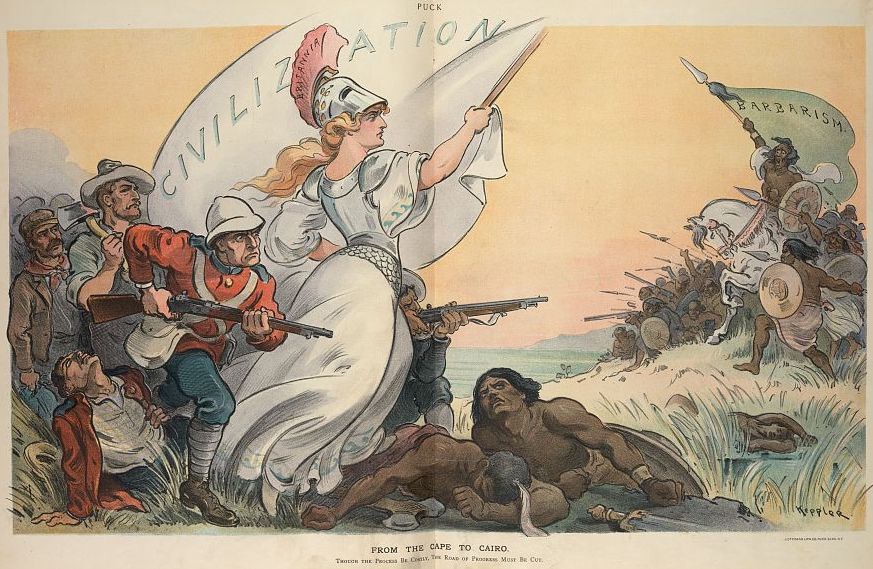
Chapter Outline:
In chapter five we saw technology revolutionize how things were done and how it made things so easily accessible. Yet, “for every action there is an opposite and equal reaction!” The Industrial Revolution paved the way for Imperialism… Newton knew exactly what he was talking about with this law and we’ll see this in this chapter.
- The Beginning of The End
- Declining Land-Based Empires
- Rising Overseas Empires
- The United States: Slavery, Expansion, and Civil War
- Neo-Imperialism in Latin America
- U.S. Imperialism
- The European “Scramble for Africa”
- China and Japan
Consider the decline of the empires we’ve already become familiar with in earlier chapters, in Asia, Europe, and the Muslim world. They were territorial empires that had used military conquest to impose political control over wide expanses of land adjacent to their ancestral homelands. They existed by providing a degree of civil and economic order, in exchange for taxes on the agricultural produce of the agrarian populations they conquered. These empires usually left their citizens more or less alone to speak their own languages, practice their own religions, and observe their own cultural traditions. Occasionally they took captives from conquered lands, like the janissaries of the Ottoman Empire.
 The Portuguese and Spanish began establishing the first European overseas empires in the Azores and Canary Islands in the late 1400s, extending their overseas imperial project into the Americas after 1492. In the process, the Spanish defeated several land-based indigenous empires such as the Aztecs, Inca, and Maya, and replaced the native rulers with Spanish Viceroys. The British, French, Dutch, and others soon followed the Iberians into the Caribbean and North America. All the European colonies in the Americas were controlled by their respective “mother” countries, sending resources like silver and gold and agricultural products (especially sugar) to Europe, and often required to trade only with the “mother” economy. As we will see, Europeans continued this model of overseas empires in the 1800s as Africa and parts of Asia came to be dominated by outside imperial powers.
The Portuguese and Spanish began establishing the first European overseas empires in the Azores and Canary Islands in the late 1400s, extending their overseas imperial project into the Americas after 1492. In the process, the Spanish defeated several land-based indigenous empires such as the Aztecs, Inca, and Maya, and replaced the native rulers with Spanish Viceroys. The British, French, Dutch, and others soon followed the Iberians into the Caribbean and North America. All the European colonies in the Americas were controlled by their respective “mother” countries, sending resources like silver and gold and agricultural products (especially sugar) to Europe, and often required to trade only with the “mother” economy. As we will see, Europeans continued this model of overseas empires in the 1800s as Africa and parts of Asia came to be dominated by outside imperial powers.
However, the new project of economic “neo-imperialism” also appeared in the 19th century, especially in the new republics of Latin America. In this case, supposedly independent countries that had recently won their independence from the Spanish and Portuguese empires, were economically dominated by European and U.S. investors, still providing raw materials for the “Great Powers” in exchange for finished industrial goods. As presented later, nearly all of these new nations became indebted to European banks and faced the humiliation of “gunboat diplomacy” in which U.S. and European powers took over custom houses to force payment of loans.
Before World War I, the decline of land-based empires was nearly complete, while overseas empires flourished.
Declining Land-Based Empires
The land-based empires began a precipitous decline after the Napoleonic wars. The challenge of nationalism amongst these multi-ethnic empires often proved to be a fatal mix. Members of distinct cultural, religious, and linguistic groups began to demand more autonomy within these empires, which frequently led to the establishment of independent nation-states. In other cases, empires that resisted change were conquered by powerful nations expanding their overseas empires. Often these factors combined to challenge land-based empires.
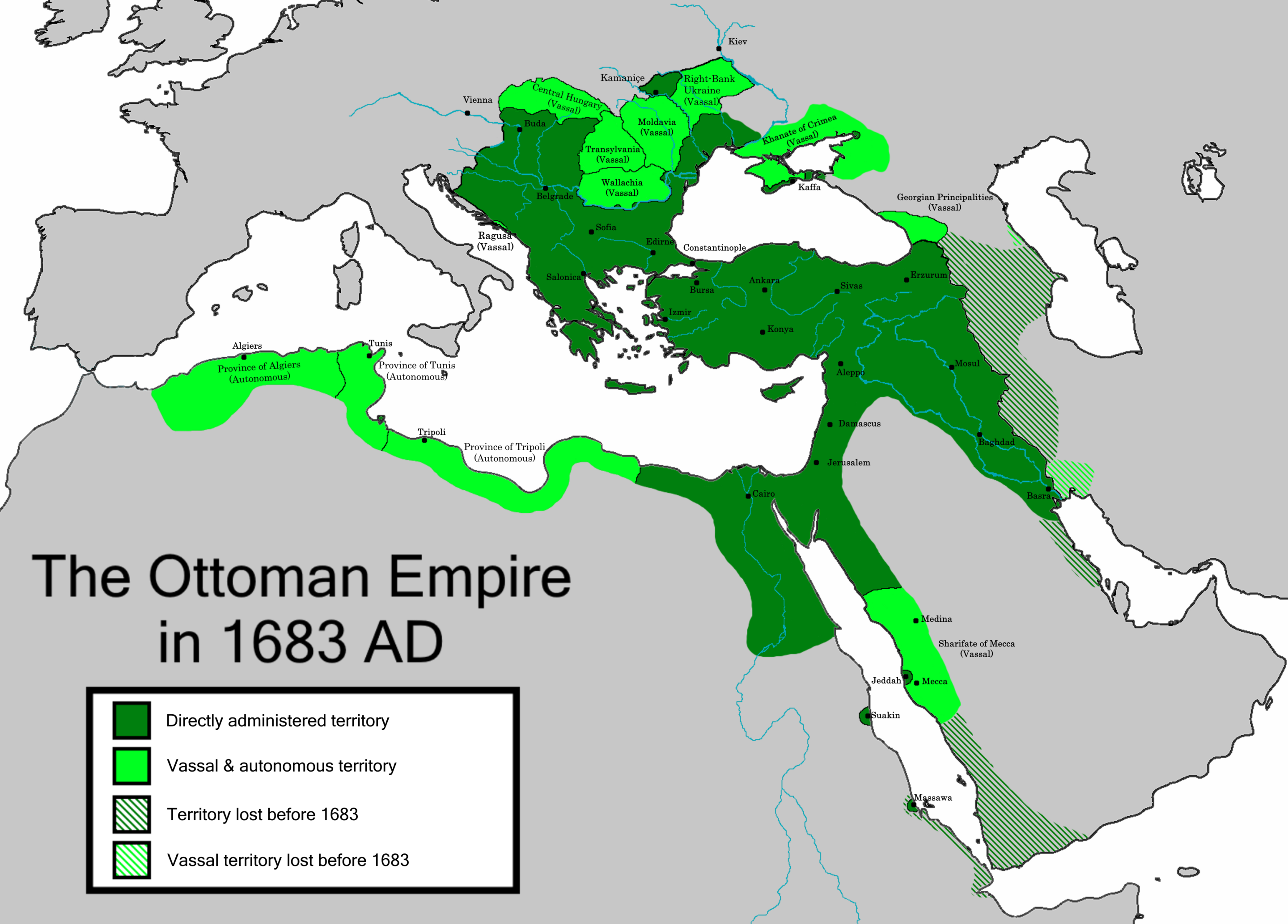 The Ottoman Empire began its decline in the 19th century and managed to survive until World War I. The Sunni Muslim empire was, in present-day Turkey, bordered by Orthodox Christian Russia to the north, the Catholic Habsburg (Austro-Hungarian) Empire to the west, and the Shiite Iranians in Persia to the east. Surrounded by opposing faiths the empire would also have to face loosing territory to Russia’s push for reestablishing Cristian rule. The Russians aided the Orthodox Greeks, Serbs, and Bulgarians in their successful struggles for independence.
The Ottoman Empire began its decline in the 19th century and managed to survive until World War I. The Sunni Muslim empire was, in present-day Turkey, bordered by Orthodox Christian Russia to the north, the Catholic Habsburg (Austro-Hungarian) Empire to the west, and the Shiite Iranians in Persia to the east. Surrounded by opposing faiths the empire would also have to face loosing territory to Russia’s push for reestablishing Cristian rule. The Russians aided the Orthodox Greeks, Serbs, and Bulgarians in their successful struggles for independence.
The Greeks were the first in the 1820s, thanks to support from Russia, Britain, and France. The struggle for Greek freedom, in the birthplace of democracy and and home of classical literature and art, fired the imagination of the artists and writers of the “Romantic” movement then flourishing in Europe. English poet Lord Byron lost his life in
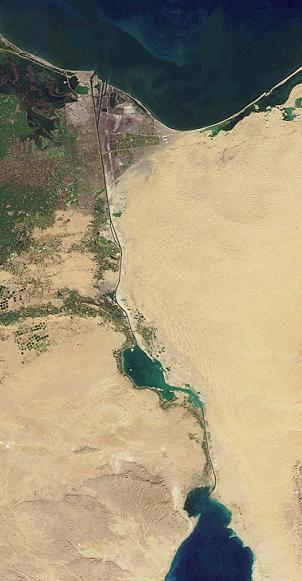
service to the Greek cause.
By the mid-19th century, disputes between European powers over what would happen to Ottoman territory caused the Crimean War (1853-1856), in which France, Great Britain, the Italian Kingdom of Sardinia, and the Ottomans opposed an expanding Russian Empire. The Crimean War was the first major war of the Industrial Age, featuring the use of railways, telegraphs, and modern ordnance like rifles and exploding naval artillery. An absolutely disastrous mismatches between traditional military tactics and the realities of modern war occurred! The conflict also revealed the weakness of the Russian Empire, which fielded large armies but lagged in both tactics and technology. In the treaty following the war, Russia was forced to remove its naval fleet from the Black Sea.The Ottomans also faced an ongoing dispute with the Egyptians, who gained practical independence under the Ottoman-appointed governor Muhammad Ali from 1805-1848. Ali modernized Egypt in many ways, while his son, Muhammad Sa’id, granted a land concession in 1854 to French businessman Ferdinand de Lesseps to dig a canal from the Mediterranean to the Red Sea.
Inspired by the example of the Greeks, and encouraged by the Russians and others, Montenegro, Serbia, and Bulgaria achieved nearly-complete independence from the Sultan in Istanbul by 1878. Nationalism was the motivation for independence, but the national community existed across many frontiers; how should they be united? And what should be done about the “other” living within one’s own country?
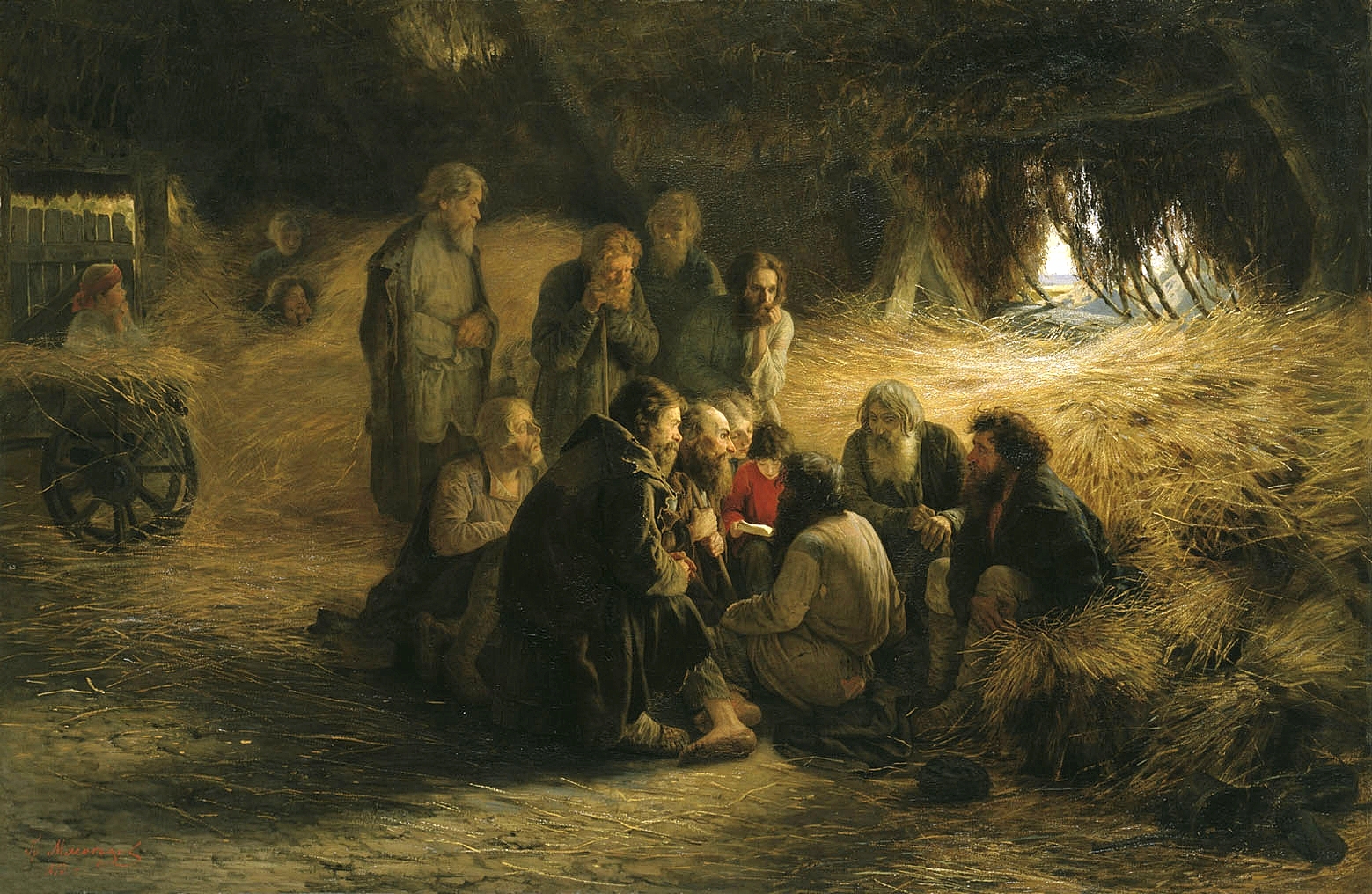
When the Russian Empire’s ambitions were thwarted in the Crimean War, Russians were forced to confront their military incompetence and social backwardness. Tsar Alexander II declared an end to serfdom in 1861, shortly before President Lincoln’s 1863 Emancipation Proclamation, during the United States Civil War. Both countries were among the last in their respective regions to formally end forced labor obligations and like the newly-“freed” in the U.S., the liberty of many former Russian serfs existed only on paper.
Russian industries expanded with investment from western Europe, factories and rail networks soon appearing, especially in the European part of Russia. However, the slowness of political and social change led to frustration among potential reformers, who instead turned to revolutionary action, often led by anarchists. Russian anarchists succeeded in assassinating the reformist Tsar Alexander II in 1881, on the day he had given approval for a limited form of parliamentary government. His son, Alexander III, rejected this political reform; he, in turn, was also murdered by anarchists, in 1894. His son, Nicholas II, was not open to any checks on his absolute power.
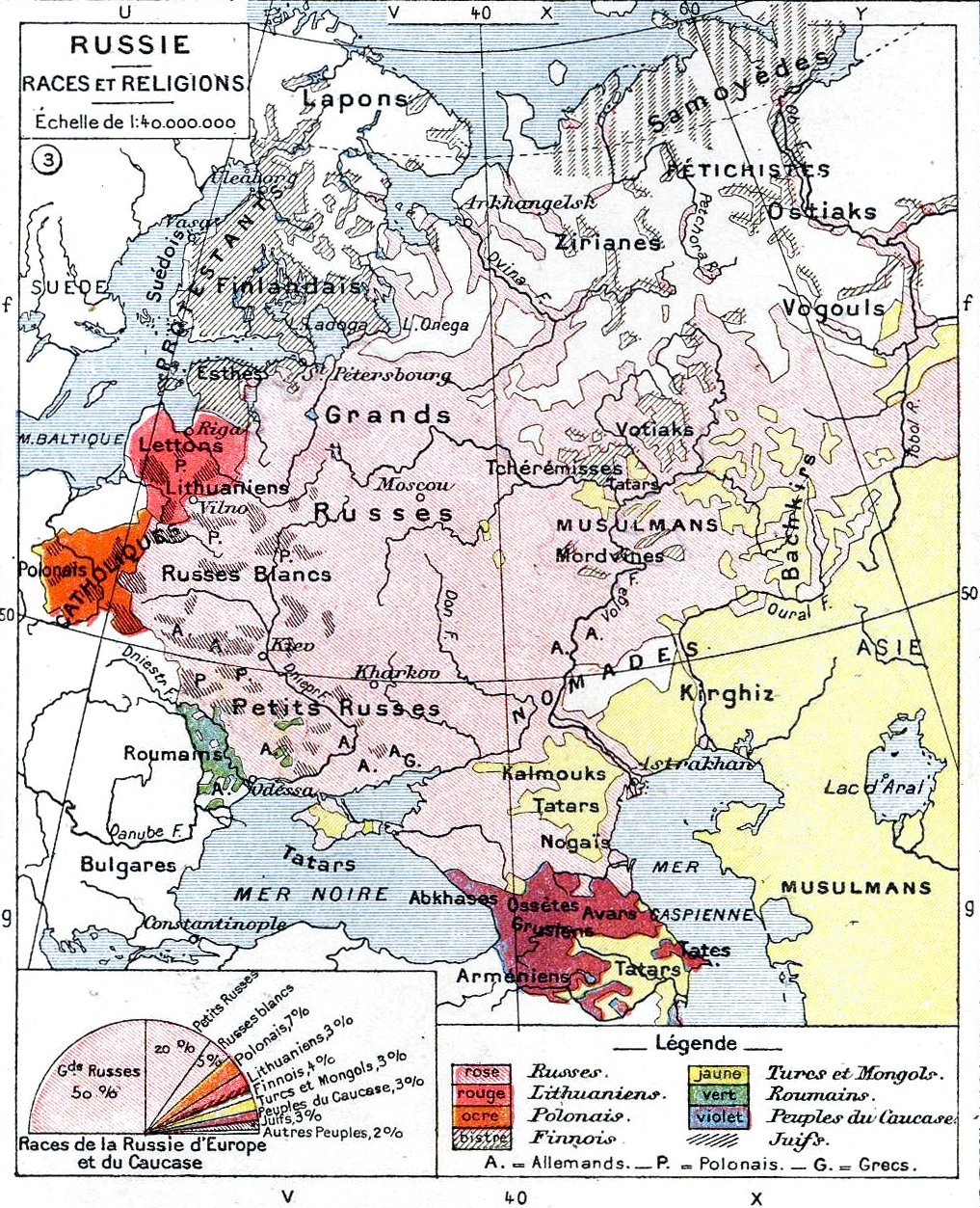
Dozens of ethnic and religious groups lived in the territories of the Russian Empire; attempts at “russification” were inconclusive. The Poles, Finns, Lithuanians, Ukrainians, and Romanians, among many others, chafed under the autocratic rule of the Tsars, and desired independence; or simply immigrated to the U.S. for better economic opportunities. Jewish Russians, many of whom lived in territory taken from Poland in the 1790s, were blamed for misfortunes like the deaths of babies or cattle and attacked in violent “pogroms“. Jews from these Russia and Eastern Europe also often chose a new life in the United States rather than discrimination and persecution.
In the late 19th century, the Tsarist autocracy encouraged anti-Semitism. Although Jews had lived in the region for centuries, they were always considered an “other”, restricted, and often blamed for every misfortune or assassination as a way to unite opposing groups. Pogroms became the norm from the 1880s until the start of World War I. Later pogroms, such as one in Odessa in 1905 in which hundreds of Jews lost their lives, received international condemnation and were presented as proof of Tsarist Russia’s backwardness.
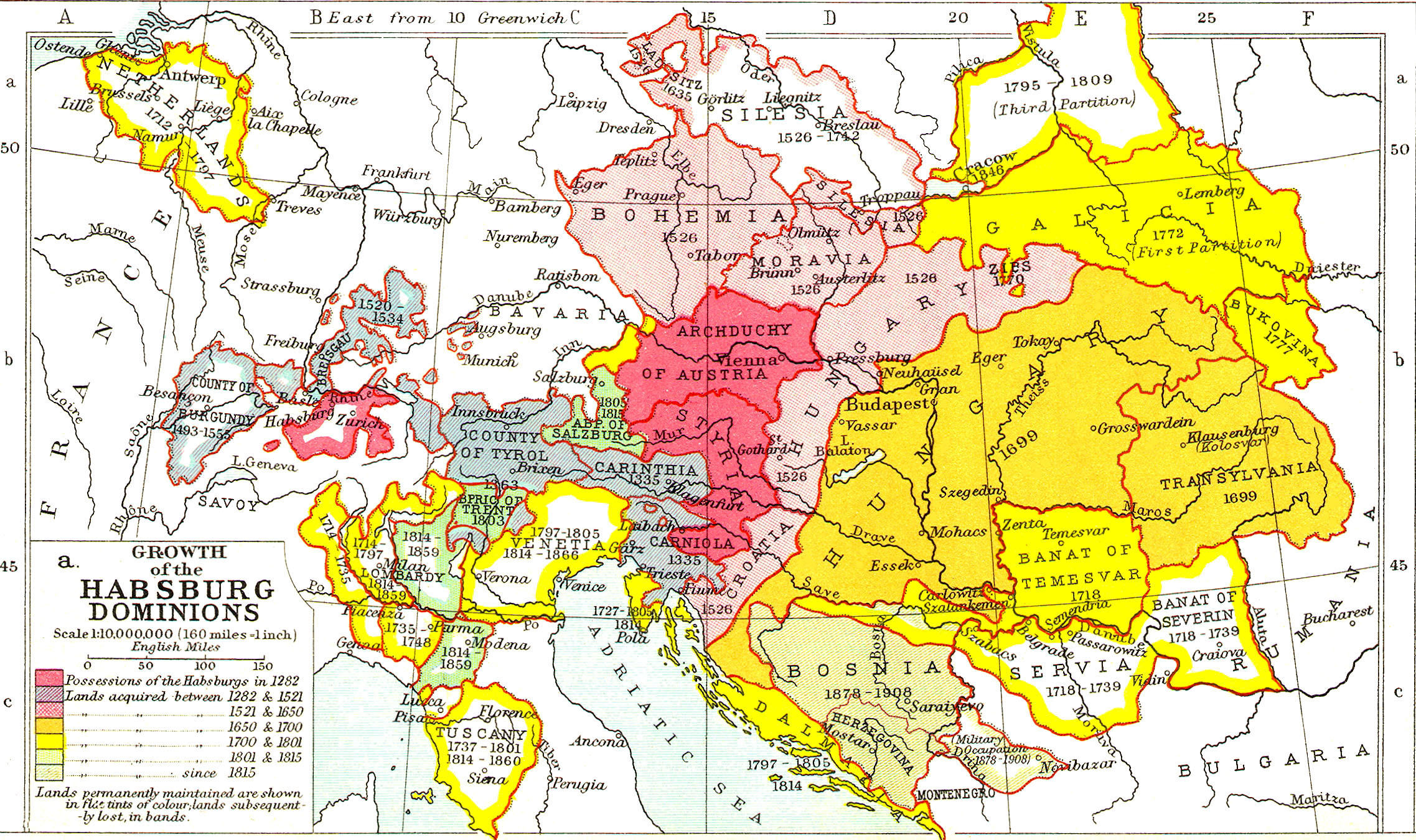
The Habsburg dynasty had ruled Austria and its territories since the late 1200s; through strategic marriages, the family also controlled the Spanish Empire in the 1500s and 1600s, including the Spanish-American colonies. The Spanish line died out in 1700, but the Austrian House of Habsburg would reign until 1918.
At the end of the Napoleonic period, the Habsburg Empire dominated southeastern Europe, up to the frontiers of the Ottoman and Russians. Until 1815, the Habsburgs had been the Holy Roman Emperors; during the Protestant Reformation, they fought to maintain Catholicism as the official religion of their realm.
Although united by religion, the Habsburg empire was divided by a growing sense of nationality. German-speaking Austrian Habsburg emperors ruled Hungarians, Czechs, Ukrainians, Poles, Slovaks, Romanians, Jews, Slovenes, Croats, Serbs, and Albanians. By the middle of the nineteenth century, many of these peoples wanted their own nations. The rebellions and revolutions of 1848 came close to breaking up the Habsburg territories in a wave of nationalist and socialist fervor. The revolutionaries did not achieve all of their goals, but serfdom was abolished, several regions gained a greater degree of autonomy, and Emperor Ferdinand I abdicated in favor of his nephew Franz Josef.
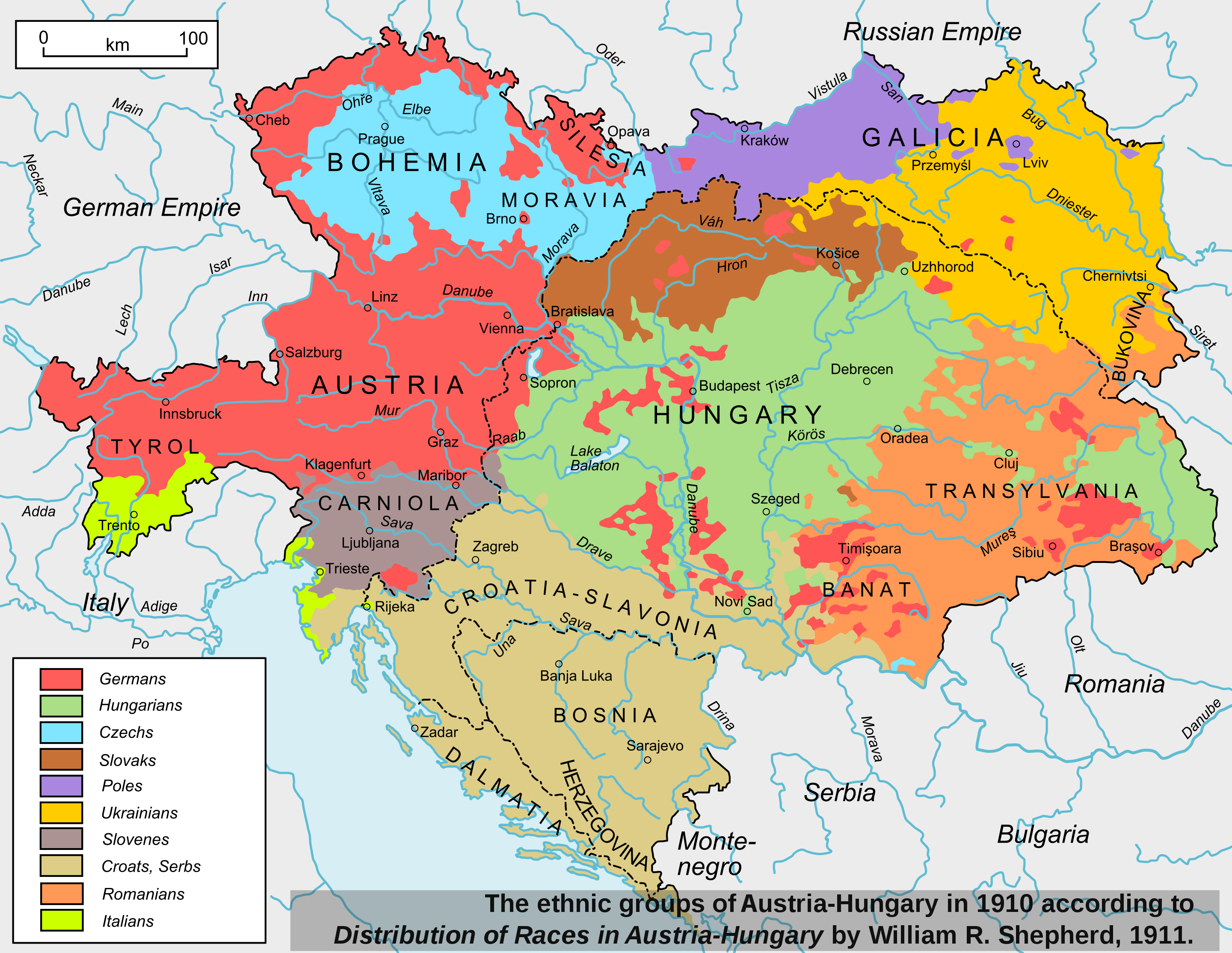
Unification of Italy in the 1860s and and Germany in 1870 allowed the Hungarians, who became the most numerous minority within the realm, to achieve near-complete independence. In 1867, the emperor agreed to establish a “dual monarchy” and merely spread out the nationalist problem for two kings instead of one: Romanians demanded more autonomy from the Hungarian administration in Budapest, while the Czechs asked for the same from the Austrian government in Vienna.
A united Germany, achieved in 1870, brought together an agricultural east with an industrialized west, creating an entirely new “Great Power” in Europe to rival Great Britain and France. The new nation called itself the German Empire (Deutsches Reich); its ambition to take a place at the table of imperial powers upset the post-Napoleonic European balance of power and, eventually, became a cause of the two twentieth-century world wars.
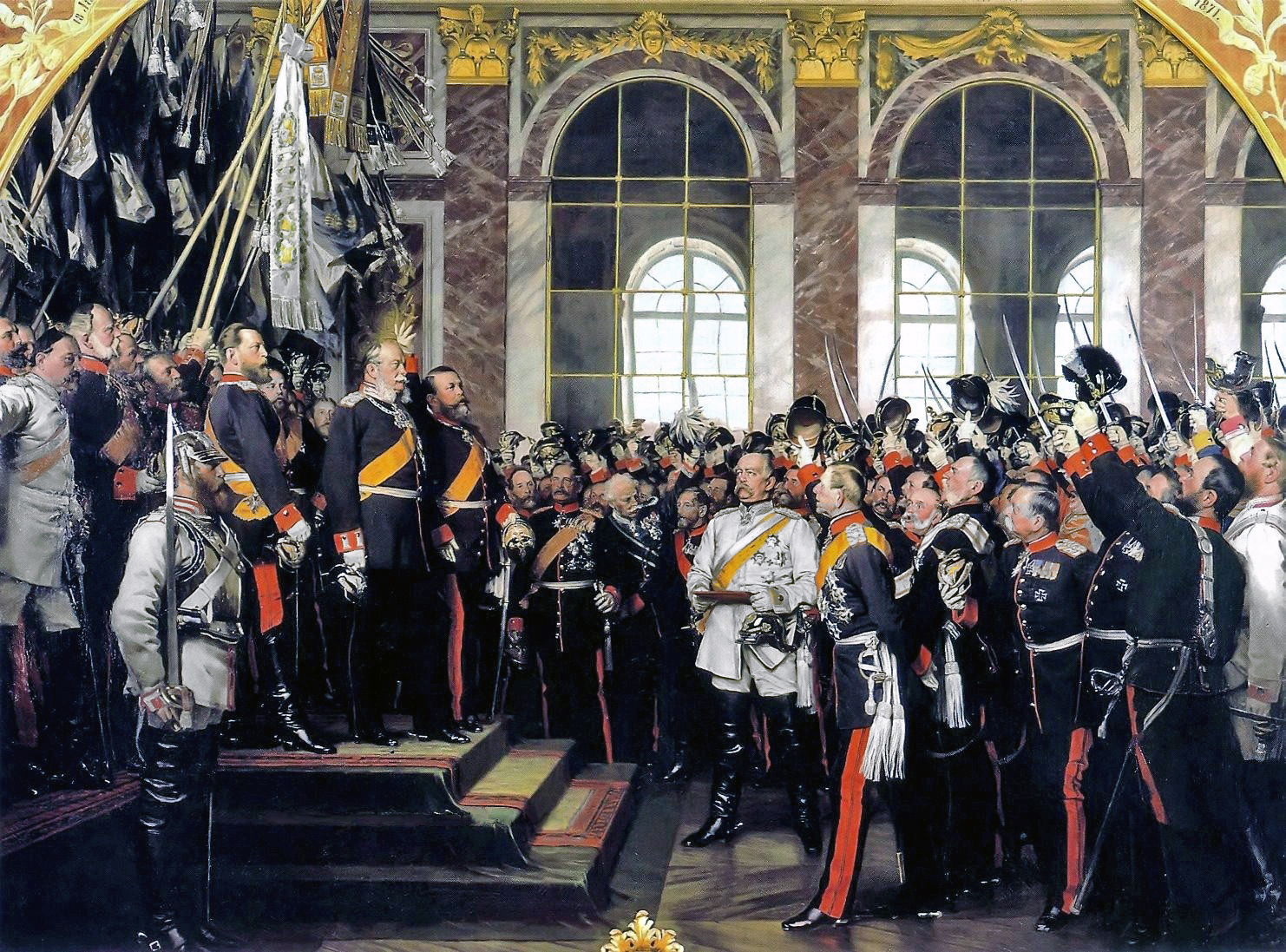
A German empire created a new dynamic in diplomatic relations, based on French and German antagonism, forming new alliances and altering previous arrangements. The Franco-Prussian War was the first of three major conflicts between the French and the Germans over the next 75 years in which millions would die; nowadays the two countries have become strong allies, forming the primary economic and political relationship of the current European Union. If the French and Germans can set aside old conflicts and work together, perhaps Indians and Pakistanis, Sunnis and Shi’ites, Israelis and Palestinians, and other “enemies” can eventually do the same.
Rising Overseas Empires
Even though the British North American colonies achieved independence and became the United States, Britain held on to Canada and retained control of islands in the Caribbean, while (as described below) London’s bankers and British industry would dominate the finance and trade in the new Latin American republics.

Canada achieved its independence from Britain much more slowly and without a revolution. Although the French-speaking Quebecois and the British in Ontario could easily have been at each other’s throats, anxiety over an invasion from the United States (which was tried unsuccessfully in 1775 and 1812) held a fragile alliance together. After two more incursions by American forces in the 1830s, the British North America Act of 1867 created the Dominion of Canada by combining Quebec, Nova Scotia, Ontario, and New Brunswick. John A. MacDonald became the nation’s first Prime Minister in 1867, negotiated the purchase of the Northwest Territories from the Hudson’s Bay company in 1869, and convinced Manitoba, Prince Edward Island, and British Columbia to join the Dominion. MacDonald knew that like the U.S., Canada’s eastern and western coastal regions needed a transcontinental railroad to bind them together and so began construction of the Canadian Pacific Railroad; completed in 1885.
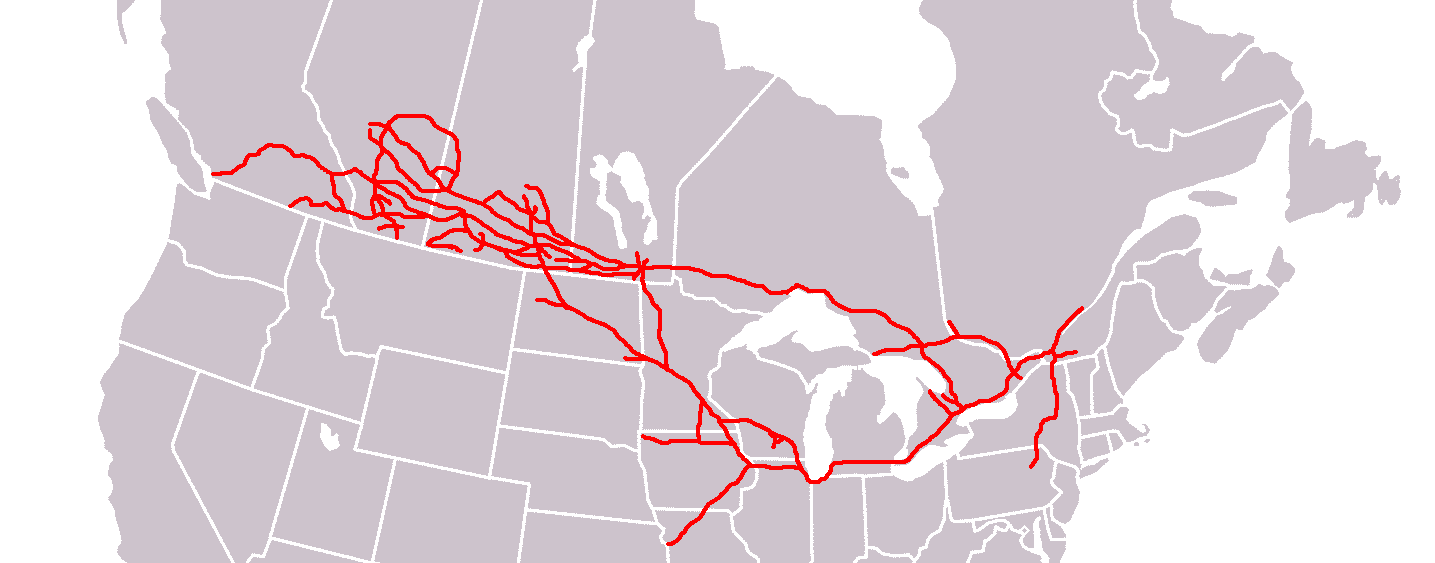
The British had also claimed Australia, which they settled in the late 18th century with convicts. Most of the crimes were petty or related to debt, while some were political, such as the Irish condemned for protesting English rule. New Zealand was settled in the early 19th century through a private company, following the model established in the colonization of some of the Thirteen Colonies. In both cases, the native peoples lost land in much the same manner as in British North America. In Australia, the vast continent allowed for the aborigines to retreat, until environmental and other factors brought them into increasing contact with the settlers and their descendants. In New Zealand, relations between the native Maori and the settlers followed a pattern similar to those of the western United States: treaties made, treaties broken, wars fought and won by the settlers, who took more land. However, respect and celebration of Maori rights and culture have become integral to New Zealand identity in recent decades.
India was the most important colony for the British, determining much of its international diplomacy until after World War II. When the British East India Company began its conquest of India in the 1700s, the Mughal Empire was entering a long period of decline after its peak in the 16th and 17th centuries. By the middle of the 19th century, the Company controlled most of mainland India, Pakistan, Burma, and Bangladesh, as well as Sri Lanka. However, the Company shifted its policy away from simply trading, and began reorganizing the Indian economy, clearing forests and establishing widespread cultivation of tea, coffee, cotton, and opium for use in China. By the time the Crown took over direct control of the colony in 1858 after an uprising called the Sepoy Mutiny, India was a producer of agricultural products and raw materials for Britain’s growing industrial economy.

By the mid-19th century, the British in India had established an imperial model that had proved lucrative for investors: the colony provided raw material and resources for the consumers and industries of the “home country,” while Indians purchased mass-produced textiles and other goods from British factories as a “captive market.” This closed economic system was attractive to both older and newer European empires—setting off, as we shall see, a scramble for colonies in Africa in the late-19th century.
The British administration of India, however, also provided a model for other European imperialists. In their standard long-distance rule, they trained locals to aid in their governance. This process began under the East India Company with the formation of native army and police forces, commanded by British officers, but soon included educated local administrators who spoke English and understood and applied imperial laws and edicts. This model proved so effective in India that Indian immigrants often followed the British to their new colonies in Africa and helped the British set up shop so to speak.
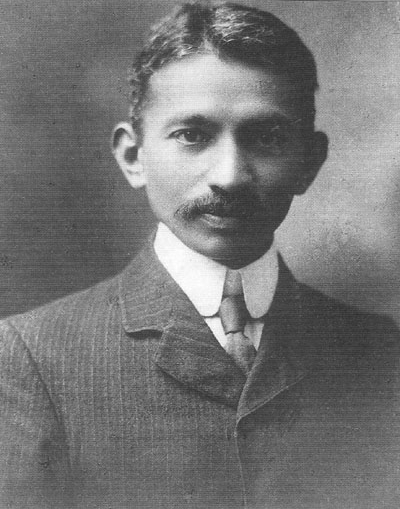
The story of Mahatma Gandhi, who later helped lead India to independence, is an example of a native trained to manage the Empire. After an education in a British school in India, Gandhi went to London and studied law. On graduating he went to South Africa to serve the British Empire as a lawyer for 25 years before beginning a new career advocating for Indian independence. This, too, was a pattern duplicated in other European empires: eventually, educated local elites and professionals would begin to demand greater autonomy, if not outright independence, since they were already administering the colonies for the “mother country.” Ho Chi Minh, who would fight with and then against U.S. forces for the independence of Vietnam, applied for admission to the French academy in Marseilles that trained imperial administrators. If the school had accepted him, history might have been quite different.
The United States: Slavery, Expansion, and Civil War
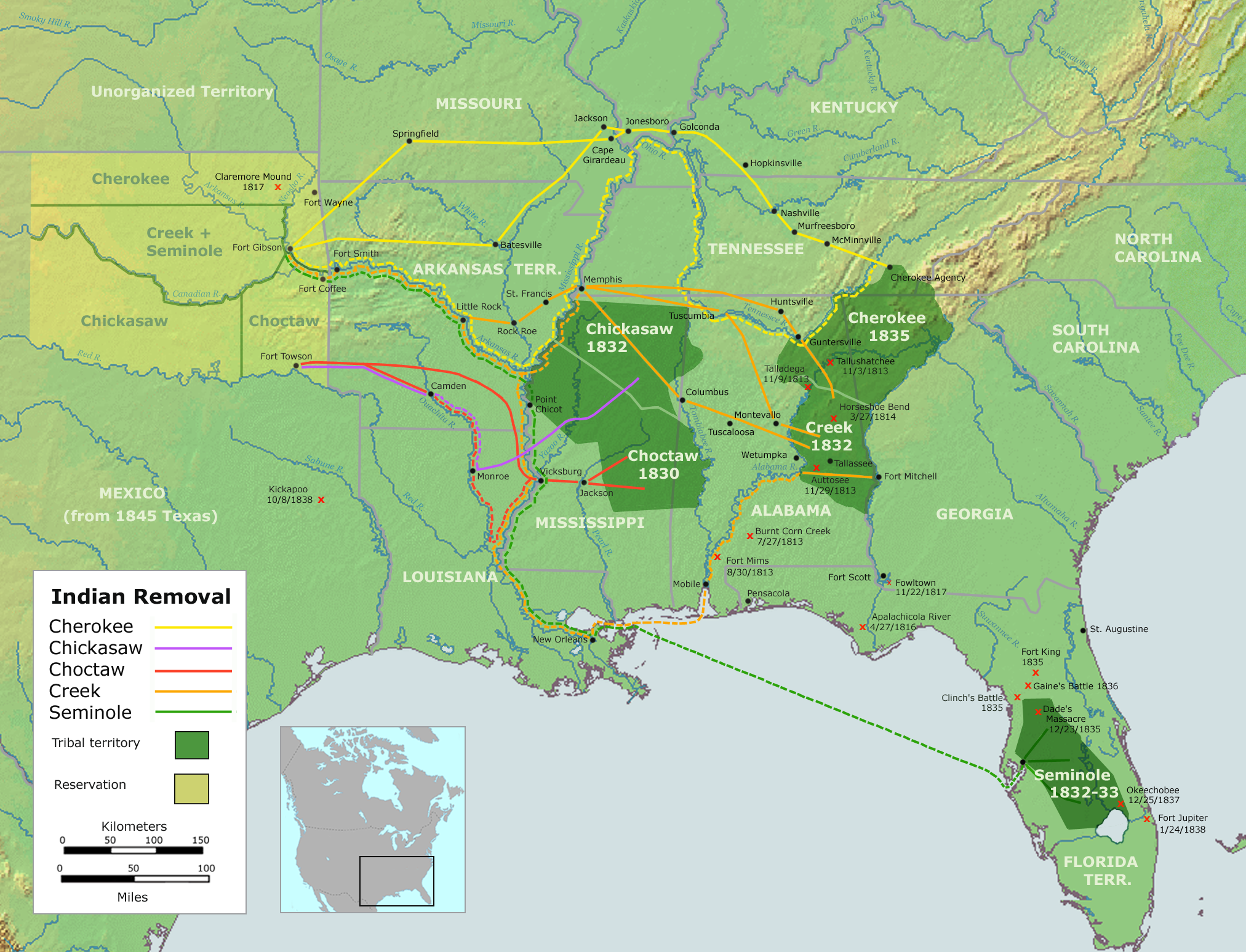
Whitney’s invention caused an explosion of cotton planting, which led not only to an expansion of slavery but to a hunger for new land. As had happened in the Thirteen Colonies, white-led settlement came at the expense of the Native Americans. The five “civilized tribes” of the south, the Cherokee, Creek, Choctaw, Chickasaw, and Seminole, were Indians who had embraced Christianity and Anglo-American institutions. They established their own farms and even plantations, published a bilingual newspaper, governed themselves in a bicameral legislature, and even owned black slaves. Nevertheless, they were cast out of the southern states by the Indian Removal Act of 1830, forced to leave ancestral lands and relocate in Oklahoma, west of the Mississippi River. The “Trail of Tears” for these displaced people was well-named: thousands died in the forced march across the South and during their settlement in a completely different environment. Despite treaties, similar processes also occurred in the Louisiana Territory and beyond.
Because some U.S. publishers are interested in selling their textbooks to school boards in the former Confederate States, they often soft-pedal the Civil War in a way that creates confusion. So, let’s be very clear: it is absurd to claim that supporting slavery was legitimately based on the “sanctity of private property rights” espoused by the U.S. Founding Fathers as part of their Enlightenment values. It is not reasonable to argue that property is a human right, but only for some humans, and that other humans can be property, rather than having property rights. Furthermore, the U.S. Civil War was about slavery, NOT about “states’ rights.” Although the Confederacy made this claim after they lost, when they seceded and while they thought they were winning, the South very clearly stated it was leaving the Union to preserve the institution of slavery. Yet, what did the Civil War look like?
Neo-Imperialism in Latin America
As described in Chapter 4, Latin America achieved independence from Spain and Portugal in the first decades of the 1800s. Great Britain was particularly interested in an independent Latin America as a source of markets for its industrial products, while English and Irish mercenaries, available after the Napoleonic Wars, joined the fight for freedom alongside Bolivar and others in Latin America. The Spanish and Portuguese became the first Europeans to begin losing their overseas empires, nearly 150 years before the British, French, and others would go through the same process. The new countries of Latin America suffered through a long period of struggle to establish stable governments and thriving economies—which, depending on the country, included civil wars, dictatorships, social and political reforms, and economic dependence on a handful of exports and their international price.
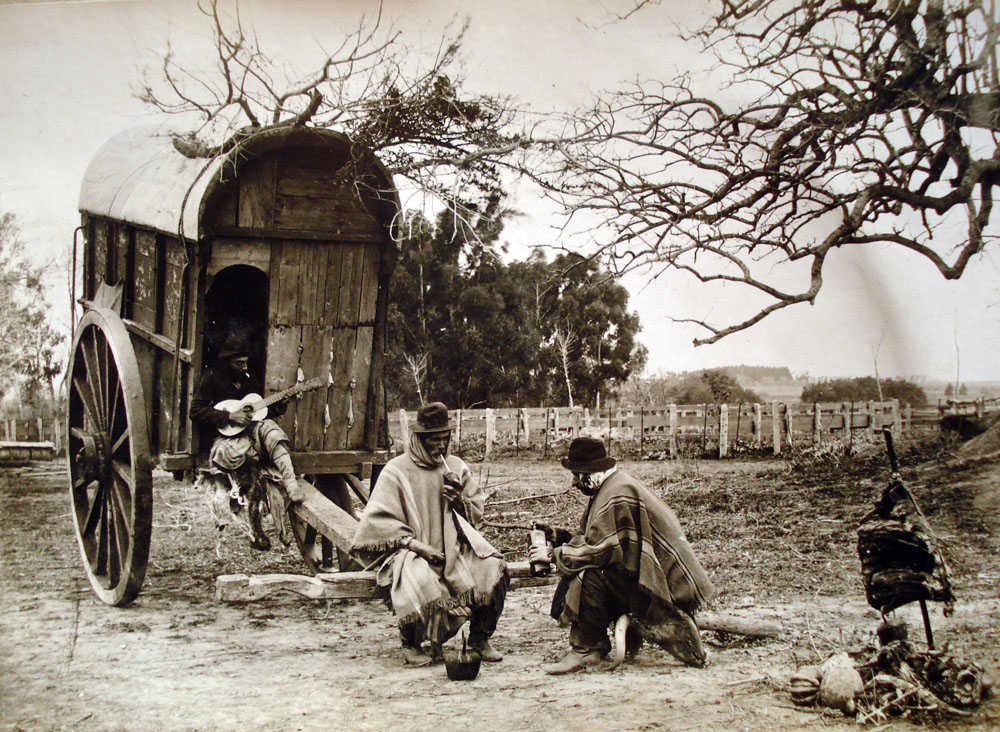
The new countries also were the first to experience neo-imperialism. This “new” imperialism technically respected national sovereignty, but in reality forced governments to bend to foreign influence. In the 1820s and 1830s, the new governments of Latin America quickly became indebted to British banks, which had arranged large loans in anticipation that independence would bring rapid economic development as it had in the United States. Many countries became dependent on the international price of a handful, or even a single, export such as copper and nitrates in Chile, coffee in Brazil, beef and grain in Argentina, sugar in Cuba, and bananas in Central America. British investors in Latin America were followed by French and U.S. businesses. This neo-imperialism continues for much of Latin America well into the 21st century, while the model was extended to new countries formed in Africa and Asia from the declining European empires after World War II.
As noted in the last chapter, Chile controlled over 80% of the world’s nitrates in the 1880s, making it a serious power in the Pacific. After the War of the Pacific, the Chilean Navy controlled the west coast of South America, Central America, and was even a threat to U.S. interests. In 1885, when a rebellion broke out in the Colombian province of Panamá, the U.S. government sent ships and troops to both sides of the isthmus to protect the railroad owned by North American investors. The Chilean government sent its British-built armored cruiser Esmeralda (the fastest ship in the world when launched the year before) to the Pacific side of Panamá, to send a message that it would prevent any annexation of the isthmus by the U.S. Whatever its intentions, the U.S. government withdrew its navy and troops after the rebellion had calmed, as U.S. naval observers opined that the mighty Esmeralda could sink every ship in the U.S. navy at the time. The incident contributed to the building of a more effective U.S. navy in the ensuing years. The sense of vulnerability also intensified U.S. interest in a canal through the isthmus of Panama, which had been begun in 1881 by a French consortium led by Ferdinand de Lesseps (the man behind the Suez Canal).
U.S. Imperialism
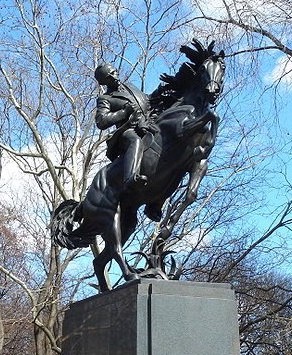
After the Latin American independence wars in 1830, the Spanish Crown still maintained control over Cuba and Puerto Rico in the Caribbean and the Philippine Islands in the Pacific. José Martí, a Cuban intellectual and poet, organized funds and support in the United States for a new push to liberate his homeland, and a new rebellion began in 1895. Martí died in his first battle, but the independence army continued with guerrilla tactics in their fight against the Spanish. The Spanish set up concentration camps for non-combatants, assuming that anyone who did not submit was an independence sympathizer. Thousands died in terrible conditions in these camps.
Yet, Cuba was far from “free” after the war, thanks to the infamous “Platt Amendment” which allowed U.S. Marines to periodically come in and change governments or put down rebellions, real or imagined. U.S. investors were particularly leery of increased Afro-Cuban participation in politics, projecting their own racism onto the affairs of the island.
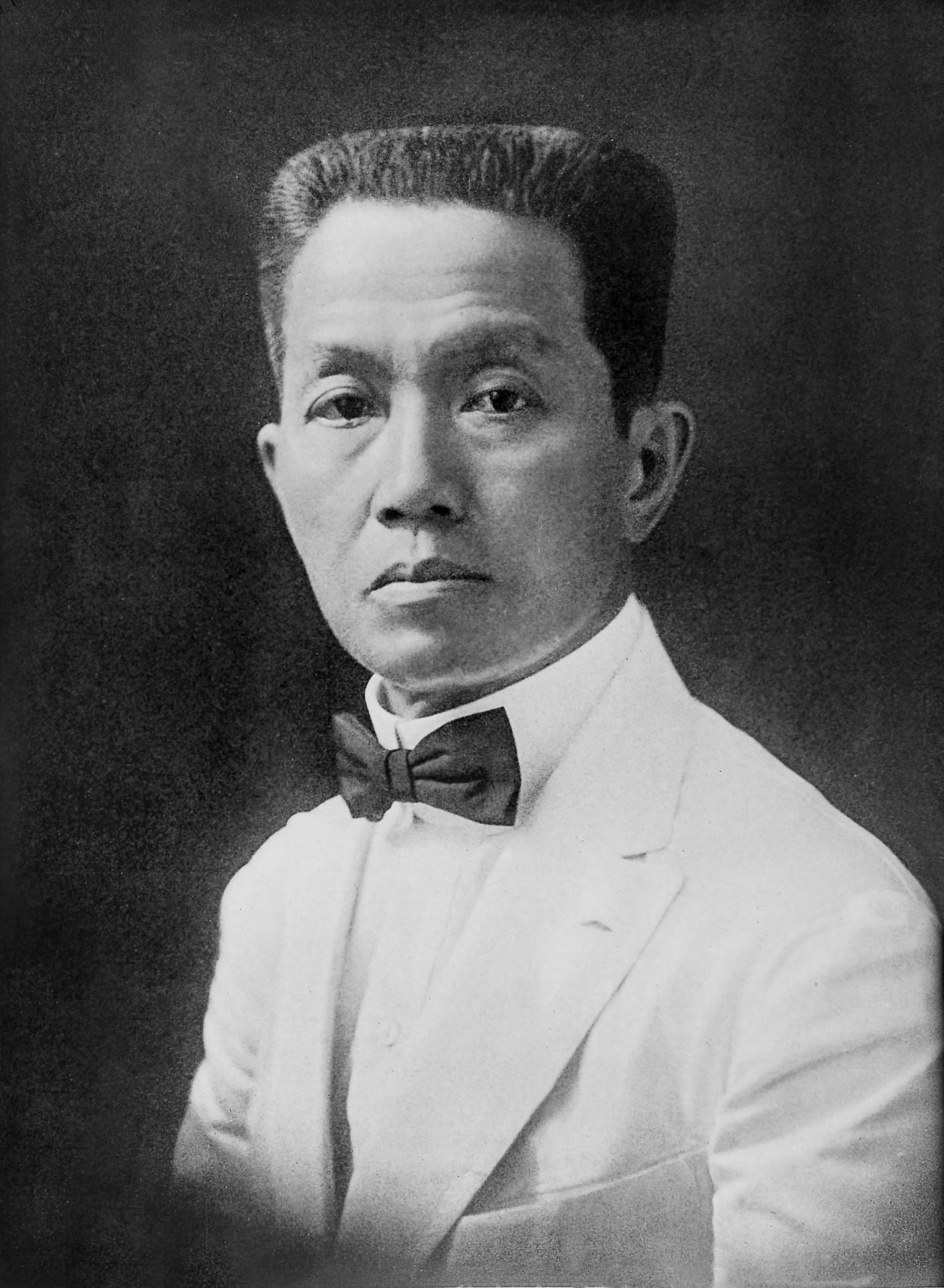
Meanwhile, the U.S. annexed Puerto Rico and Guam, which are still U.S. territories, as well as the Philippines. Filipinos had already been fighting a war for independence since 1892, so they objected to becoming a possession of the U.S. Now to add insult to injury, Rudyard Kipling’s famous 1899 poem, “The White Man’s Burden,” was written in support of the U.S. effort to subdue the ungrateful brown people of the Philippines. The U.S. Navy destroyed the city of Iloilo to suppress the independence movement, and resistance continued until 1913, but by 1902 most of the guerrillas had been pushed way from major cities. The Philippines finally achieved independence in 1946, after World War II; which included wartime occupation by Imperial Japan.
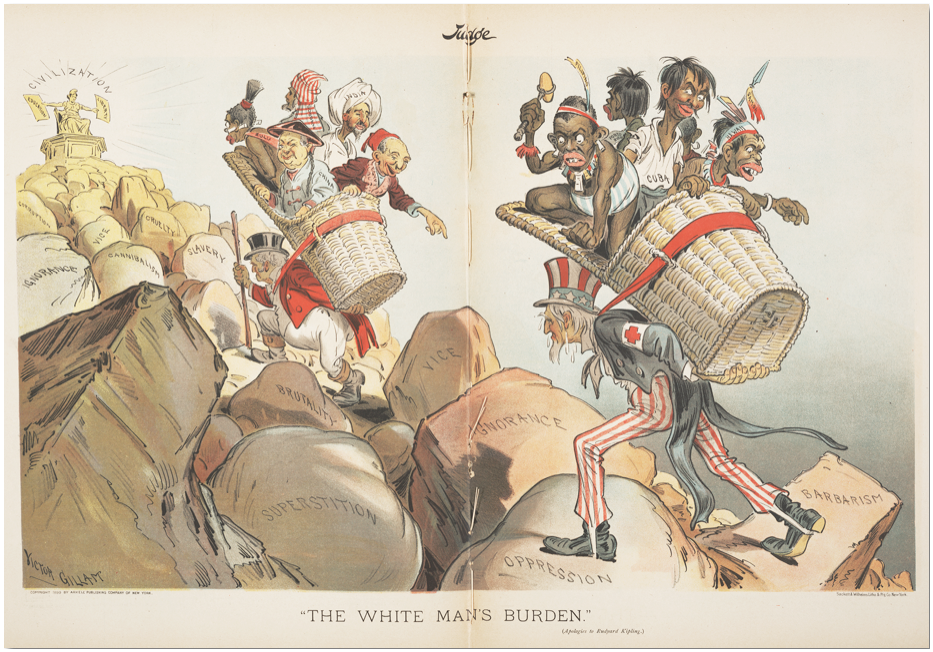
The Spanish-American War also highlighted the military importance of building a canal in Panamá. The U.S. Pacific Fleet, after defeating the Spanish in the Philippines, had to sail around South America to engage Spain in the Caribbean. In 1902 the U.S. government bought the French canal company’s land for $40 million. Although the French project managed to do some of the most difficult digging, they had abandoned the project several years earlier. Ferdinand De Lessups had planned a sea-level canal, like the Suez in Egypt, but the hilly topography made locks more practical, while the tropical jungles meant malaria for canal workers.
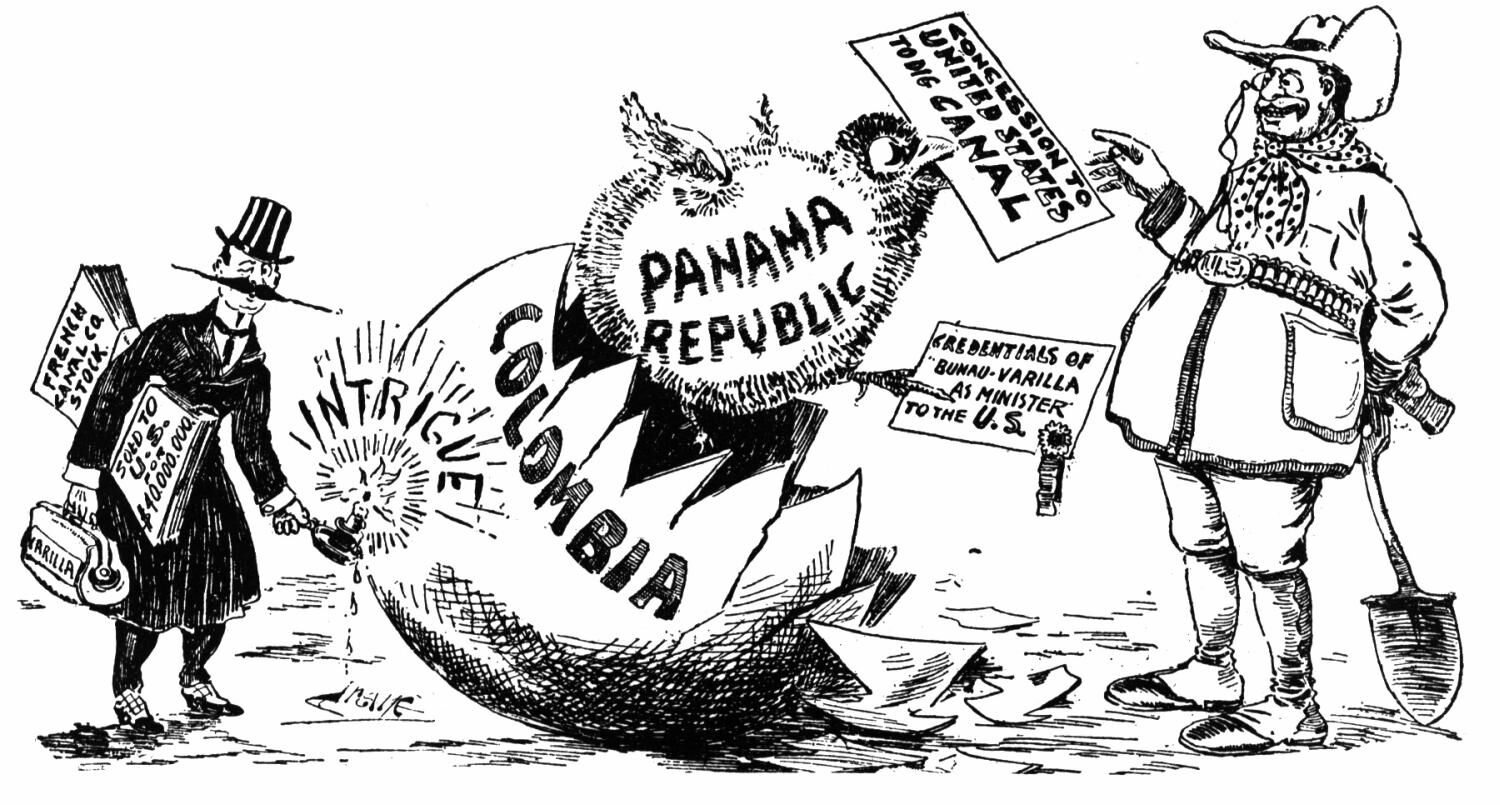
Colombia was ending yet another civil war in 1902, and although the Colombian government signed a treaty handing over a canal zone and other rights to the U.S., the Colombian senate hesitated to approve the agreement. Panamanians were upset at the delay, and it did not take much for the U.S. to help engineer the independence of Panama, sending a naval destroyer to discourage the Colombian government from sending troops. Almost immediately, the new government of Panama signed the Canal Zone over to the U.S.
Bananas began as a major Central American industry when a Cape Cod sea captain named Lorenzo Dow Baker bought 160 bunches in Jamaica in 1870 and resold them in Jersey City. The delicious fruit quickly caught on with U.S. consumers. In 1873 Minor C. Keith began planting banana trees alongside his railroad in Costa Rica. The government had defaulted on some payments to Keith, but instead gave him 800,000 acres of tax-free land along the rail line. When the railroad failed to pay for itself in the 1890s, Keith concentrated on bananas. He merged with Baker’s Boston Fruit Company, which was growing bananas on about 10,000 acres in Jamaica. The United Fruit Company was the result, established in 1899. U.F.C. quickly bought up several competitors and gained control of 80% of the bananas reaching the U.S.
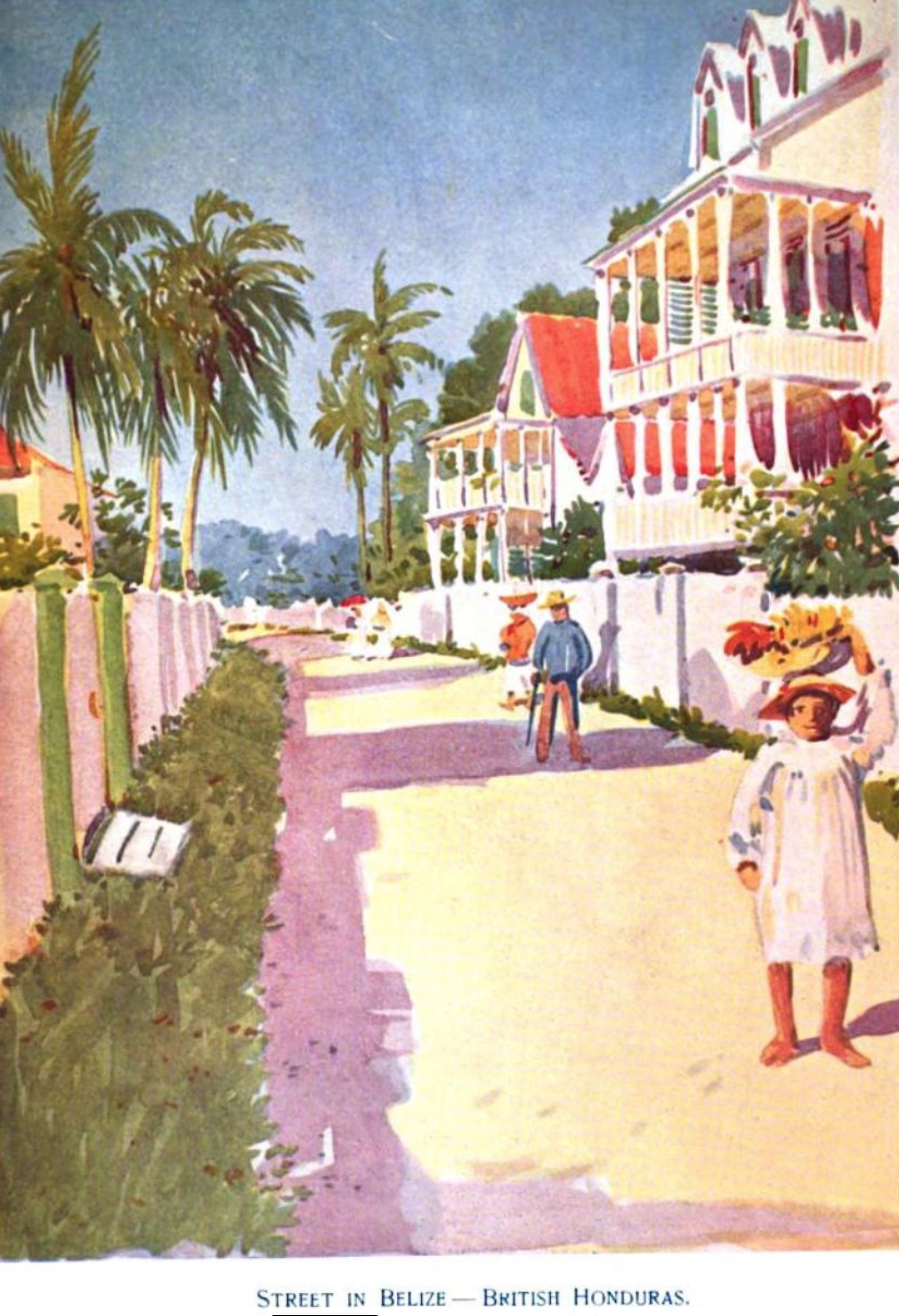
In 1901, American author O. Henry coined the term “banana republic” in his book Cabbages and Kings, inspired by a visit to Honduras in 1897. His point was that companies like the U.F.C. didn’t limit themselves to bananas. In 1900 the company began a travel service to Central America on its steamers and produced an illustrated travel guide called The Golden Caribbean. In 1901 the government of Guatemala contracted with U.F.C. to run the nation’s postal service. In 1913 U.F.C. created the Tropical Radio and Telegraph Company, and by 1930 U.F.C. was worth over $200 million and was the largest employer in Central America. The company owned over 3.5 million acres of land, making it the largest landowner in Guatemala. In 1928 when a strike at U.F.C. plantations in Colombia was portrayed by the company as a potential communist insurrection, the U.S. Marines threatened to invade Colombia if the government did not defend the U.F.C. Colombian soldiers massacred workers striking for an 8-hour day and a six-day work week. Hundreds were killed, including dozens gathered in a town plaza in support of the strike. This 1928 Banana Massacre was described by Gabriel García Marquez in his 1967 novel One Hundred Years of Solitude.
In 1933, Sam Zemurray (founder of the rival Cuyamel Fruit Company) acquired U.F.C. in a hostile takeover. Zemurray had gotten into the business in 1895 by buying overripe bananas from U.F.C. and selling them cheaply in New Orleans. In 1910 Zemurray bought 15,000 acres in Honduras and the following year he conspired with a former president of Honduras and an American mercenary general to depose the elected government and install a military regime friendlier to foreign business, especially his. Zemurray had objected to a deal made by the previous government that had granted the U.F.C. a monopoly on Honduran bananas in exchange for U.F.C. brokering U.S. Government loans to Honduras. The general who led the coup became commander of the Honduran Army and was later appointed U.S. Consul to Honduras.
In 1934 members of the banana workers union in Costa Rica began a national strike that spread to thirty other unions. The U.F.C. tried to divide workers and their salaries based on professional or ethnic differences, and even deported foreign workers. The unions and the U.F.C. came to an agreement after about a month, but the U.F.C. did not follow through on its agreements. Instead, the company began a public relations campaign depicting the unions as communist revolutionaries, with the backing of Costa Rica’s government. When the union went back on strike, its leaders were arrested.
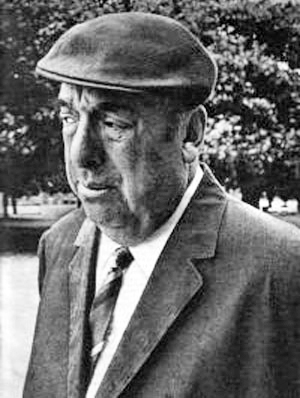
These interventions by U.S. banana companies in the internal affairs of the “banana republics” mimicked the U.S. Marine occupations of several other countries in the Caribbean. Unrest and instability in the region threatened shipping lanes and the building and maintenance of the Panamá Canal, so between 1903 and 1933, the U.S. government sent troops to quell disorders in Nicaragua, the Dominican Republic and Haiti. By the end of the period, the Marines had trained national police forces, whose leaders then took over their own governments. The Trujillo dictatorship lasted until 1960 in the Dominican Republic, while the Somoza family ruled Nicaragua until 1979. On a lighter note, the Marines also introduced baseball into the countries they occupied; it is still the national sport of Cubans, Nicaraguans, and Dominicans.
The European “Scramble for Africa”
The European scramble for Africa at the end of the 19th century was motivated by international rivalry and by the fact that Africa south of the Sahara remained the last part of the world “unexplored” by Europeans. The rivalries among the Europeans were based on the desire to create captive consumer markets for their manufactures and to secure resources like copper, tin, cotton, rubber, palm oil, tea, cocoa, and coffee upon which their industries depended.
After the British began enforcing an end to the Atlantic slave trade in 1808, European contact with most of sub-Saharan Africa consisted of trade for ivory and other goods at a handful of trading posts. Belgian King Leopold and the new German Empire began the scramble in the 1870s, sending explorers to claim African territory, much like the Spanish in the Americas 350 years before. The Portuguese in Africa defended their pre-existing arrangements, while the British and French began to rush deeper into the continent. The Europeans made agreements with many local kings and chieftains and went to war with others, always seeking a pledge of loyalty to their particular empire.
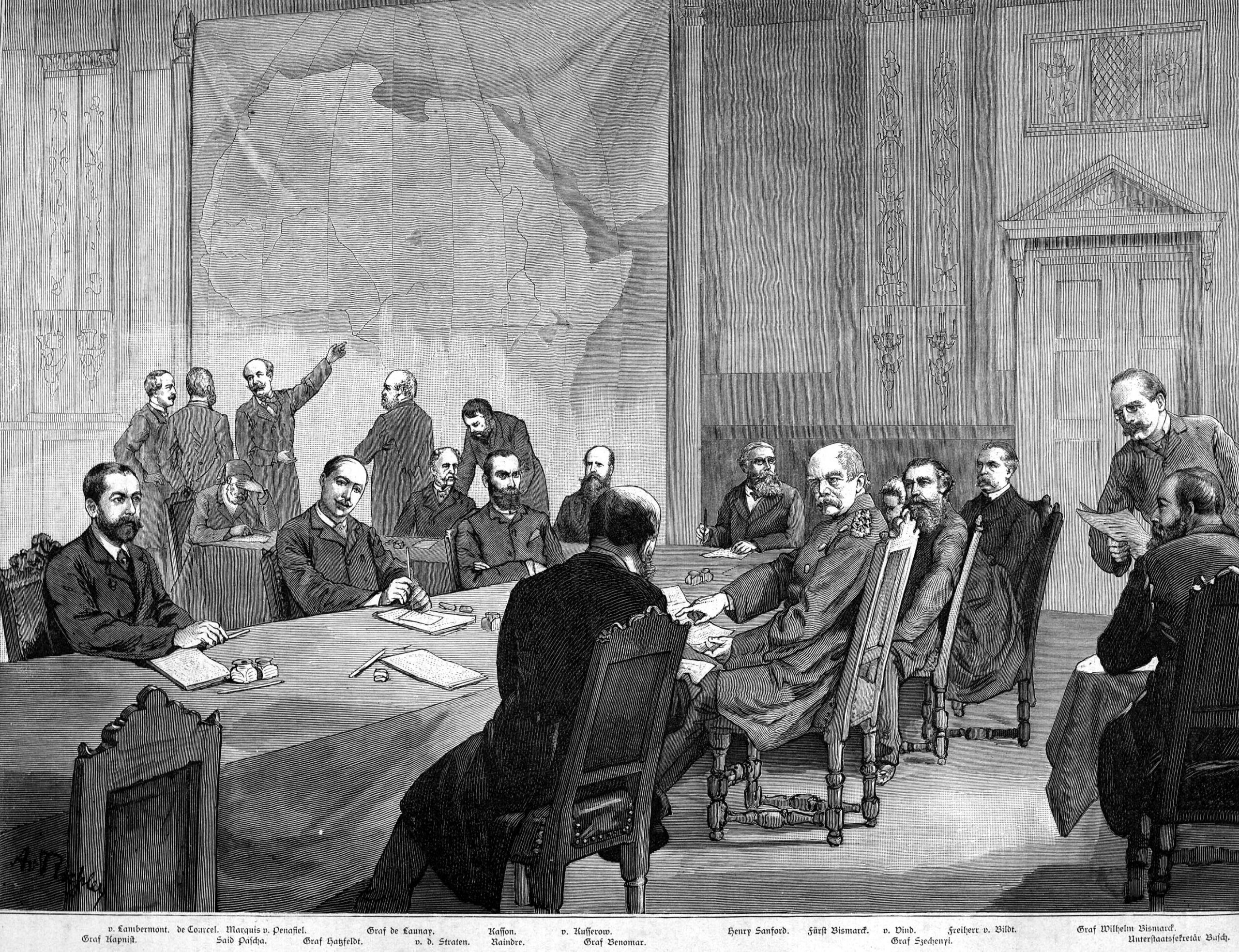
To bring order to the “scramble”, German Chancellor Otto von Bismarck in 1884 organized a conference to delineate claims. The Berlin Conference was attended by representatives from 13 European powers plus the United States. No African countries were represented except for the Ottoman provinces along the Mediterranean.
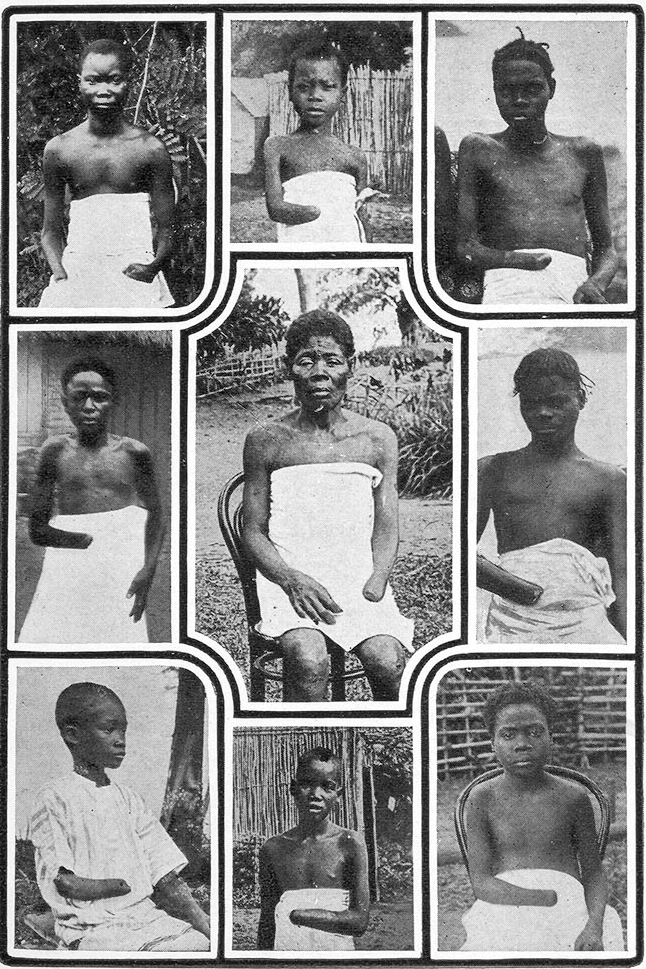
Along with the usual proposal of “civilizing” the non-European peoples of their empires, the imperialists also claimed that they were committed to ending the internal slave trade. However, European treatment of African laborers often included whipping, torture, and other punishments, alongside debt peonage. It was standard practice in the so-called “Congo Free State” (really the personal fiefdom of King Leopold of Belgium) to cut off the hands of African workers who did not meet their rubber collection quotas. The international outcry over such practices forced the Belgian government to finally take over Leopold’s holdings in 1908, after thirty years of brutal rule.
South Africa was a special case in European imperialism: the Dutch made it into a “settler colony” beginning in the mid-1600s, rather than merely establishing a trading post. Thousands of Dutch and other Europeans were attracted by the relatively cooler climate of southern Africa and plentiful arable land; they were more interested in removing the natives rather than subjugating them. The British took control of the territory from the Dutch during the Napoleonic period. In the 1830s, the imperial government began abolishing slavery and requiring English in schools and in legal transactions. In reaction, many Dutch settlers moved farther inland in the “Great Trek”, taking more land from the natives and establishing two republics, Transvaal and the Orange Free State. At the same time, the descendants of unions between Europeans, Africans, and natives of the Dutch East Indies brought in as laborers (collectively known as “coloured”) occasionally established their own autonomous regions.
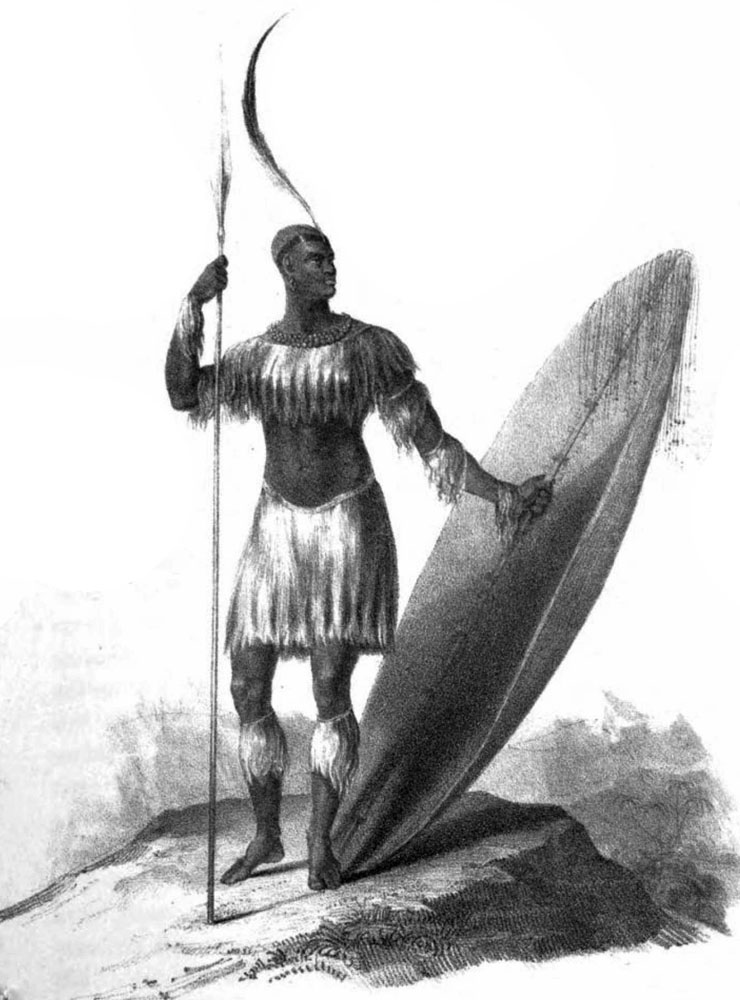
The British also faced the Zulus, who, led by their extraordinary leader Shaka Zulu and his well-trained army, had established an independent kingdom in eastern South Africa in the 1820s. When local British commanders decided to attack a growing military threat from the Zulus in 1879, the imperial regiments were defeated by Zulu troops in a series of major battles. A second invasion of Zululand was successful, but the British continued to recognize Zulu autonomy in much of their territory.
The descendants of the Dutch settlers called themselves “Boers” (the Dutch word for “farmer”) and successfully repelled a British invasion in 1881. They were defeated in the Second Boer War (1899-1902), after a bloody conflict that included a wide guerrilla war and concentration camps for Boer civilians. A young Winston Churchill, the future Prime Minister of Great Britain, went to South Africa as a journalist to report on the war, and instead was captured by the Boers. Churchill escaped and his story of heroism helped launch his career in British politics. The Germans, who held territory bordering South Africa, supported the Boers in the conflict, adding to the accumulating disagreements between the governments of Great Britain and Germany on the eve of World War I.
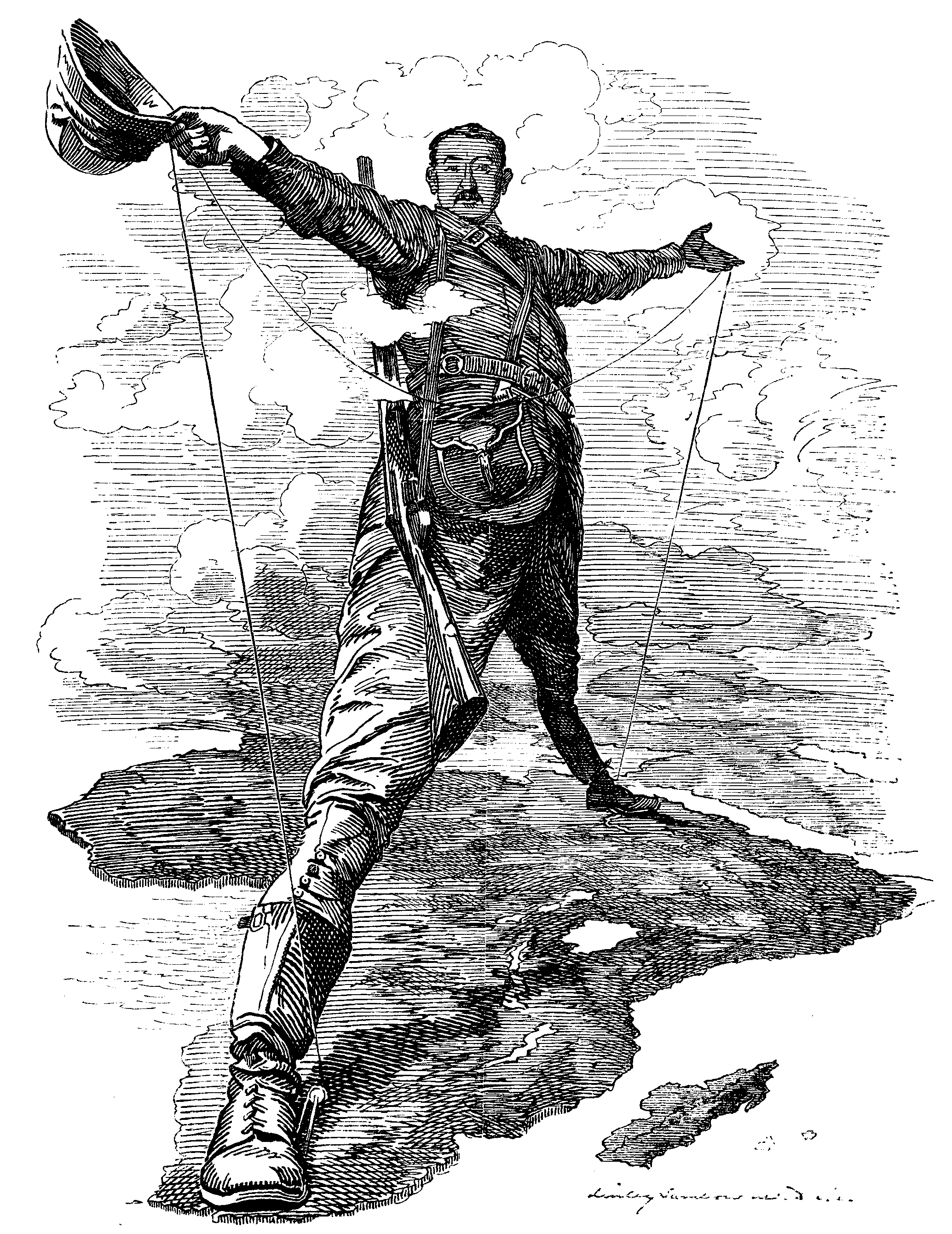
Cecil John Rhodes is now, probably, most remembered for the scholarship he endowed in his will in 1902 that funds study at Oxford for U.S. college graduates. Yet, during his years at Oxford, Rhodes absorbed the philosophy of imperialism. He attended a lecture by professor John Ruskin that became a famous justification for empire, called “Imperial Duty.” Ruling the world, Ruskin said, “is a destiny now possible to us—the highest ever set before a nation to be accepted or refused.” Rhodes took this idea back to Africa, and once declared “We are the finest race in the world and the more of the world we inhabit the better it is for the human race.” Europeans and the Americans also believed it was their job to help “civilize” the rest of the world. The “White Man’s Burden” and the “Civilizing Mission” of imperialism were big themes , we still call countries in what was once described as the “third world” as “ developing nations,” as if the goal of all the nations in the world is to become like Europe and the United States, who have a responsibility to help them do just that.
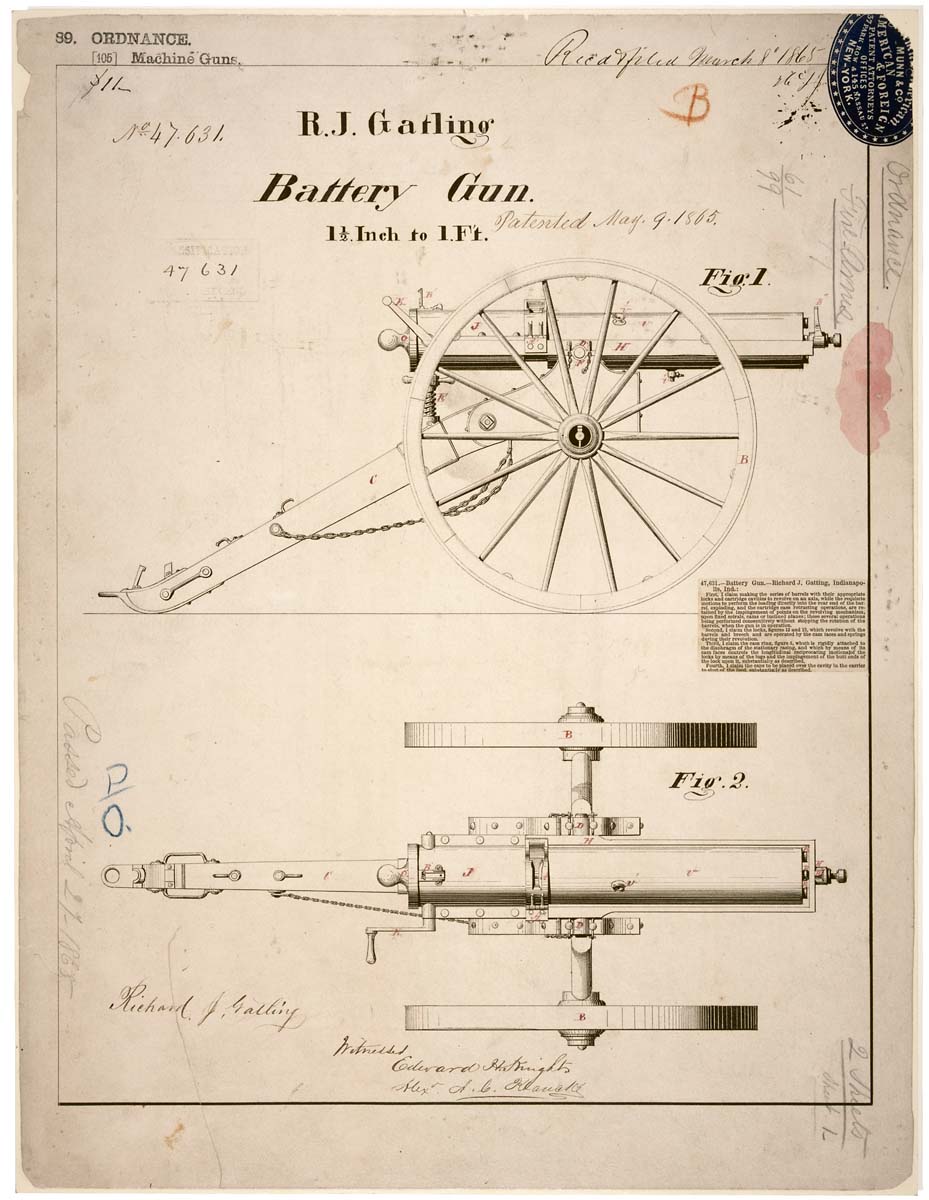
In reality, the superiority the British, French, and Americans had over the people of “less developed” nations was mostly in military technology. In the 1870s the British began using Gatling hand-cranked machine guns against the Zulu in Africa and the Bedouin in the Middle East. The Royal Navy used them against the Egyptians in 1882 during Egypt’s civil war. The US used them to support American troops during the Battle of San Juan Hill when Teddy Roosevelt and his Rough Riders made their famous charge.
Later the British switched to the Maxim gun, which was the first recoil-operated machine gun and was able to fire 600 rounds per minute. They used it in the 1890s to conquer the Ndebele kingdom in Rhodesia (now Zimbabwe) and subdue rebellions. This was the beginning of a period of asymmetrical warfare based on technology that continues to the present, and forced people who could not stand up to the imperialists’ superior weapons to find other ways to resist.
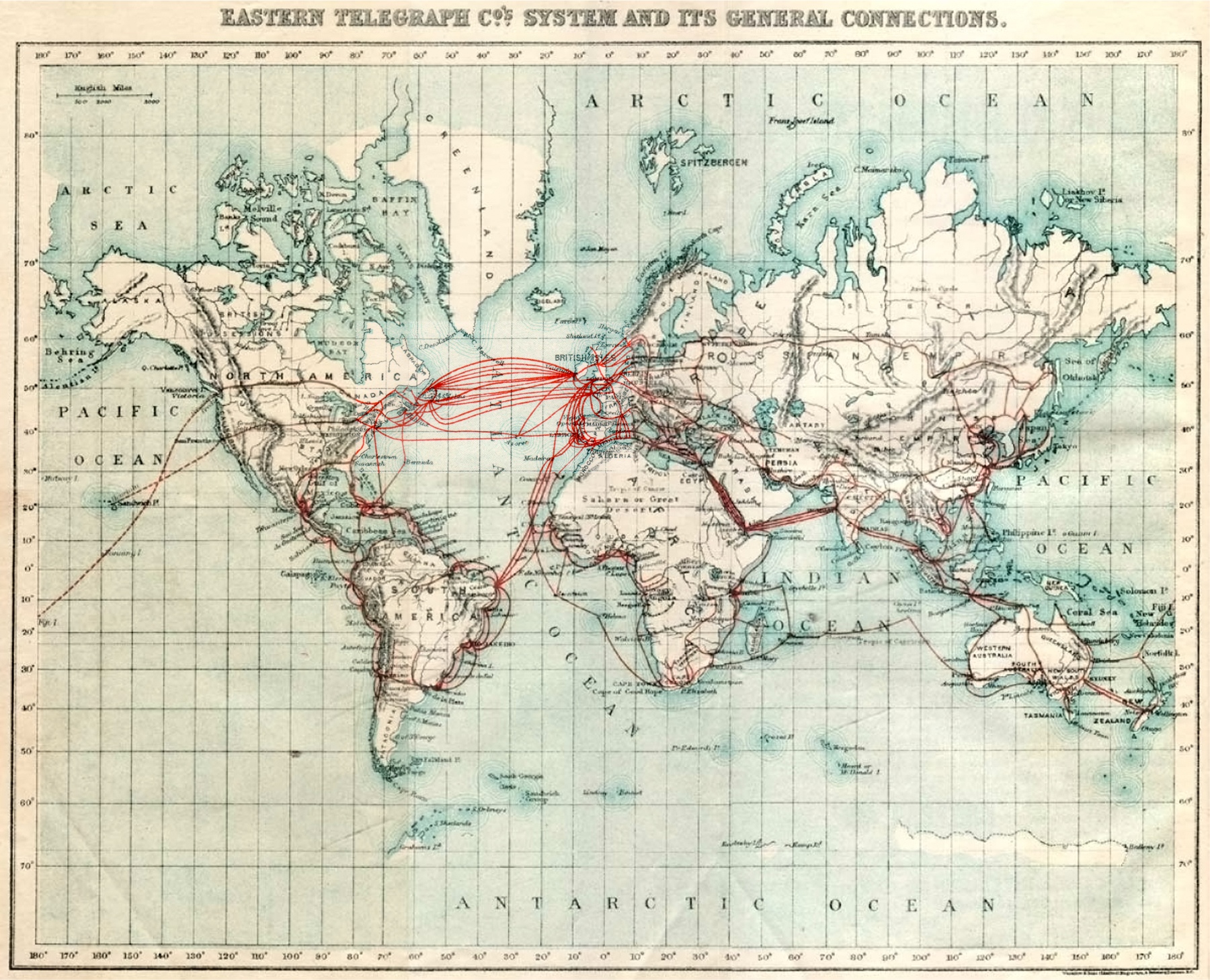
In addition to weapons and transportation, Europeans and Americans had the added advantage of communications. Telegraphs using Morse code became widespread in the U.S., Britain, and Europe during the 1850s, but undersea cables were required to connect the colonies. A successful undersea cable line between Britain and the US was completed in 1866, and Britain and India were connected in 1870. Australia was linked to the system in 1872 and a trans-Pacific cable was completed in 1903 linking the U.S. with Hawaii, Guam, and the Philippines. Although telegraphy had been pioneered by Americans like Samuel Morse, the British dominated undersea cable.
Europeans treated their military success over colonized people as proof of their cultural superiority. They developed theories of scientific racism and Social Darwinism to justify their choice to treat conquered peoples as less than fully human. They also took advantage of previous African customs and tribal animosities to divide the conquered Africans, or created new ones based on their own prejudices.
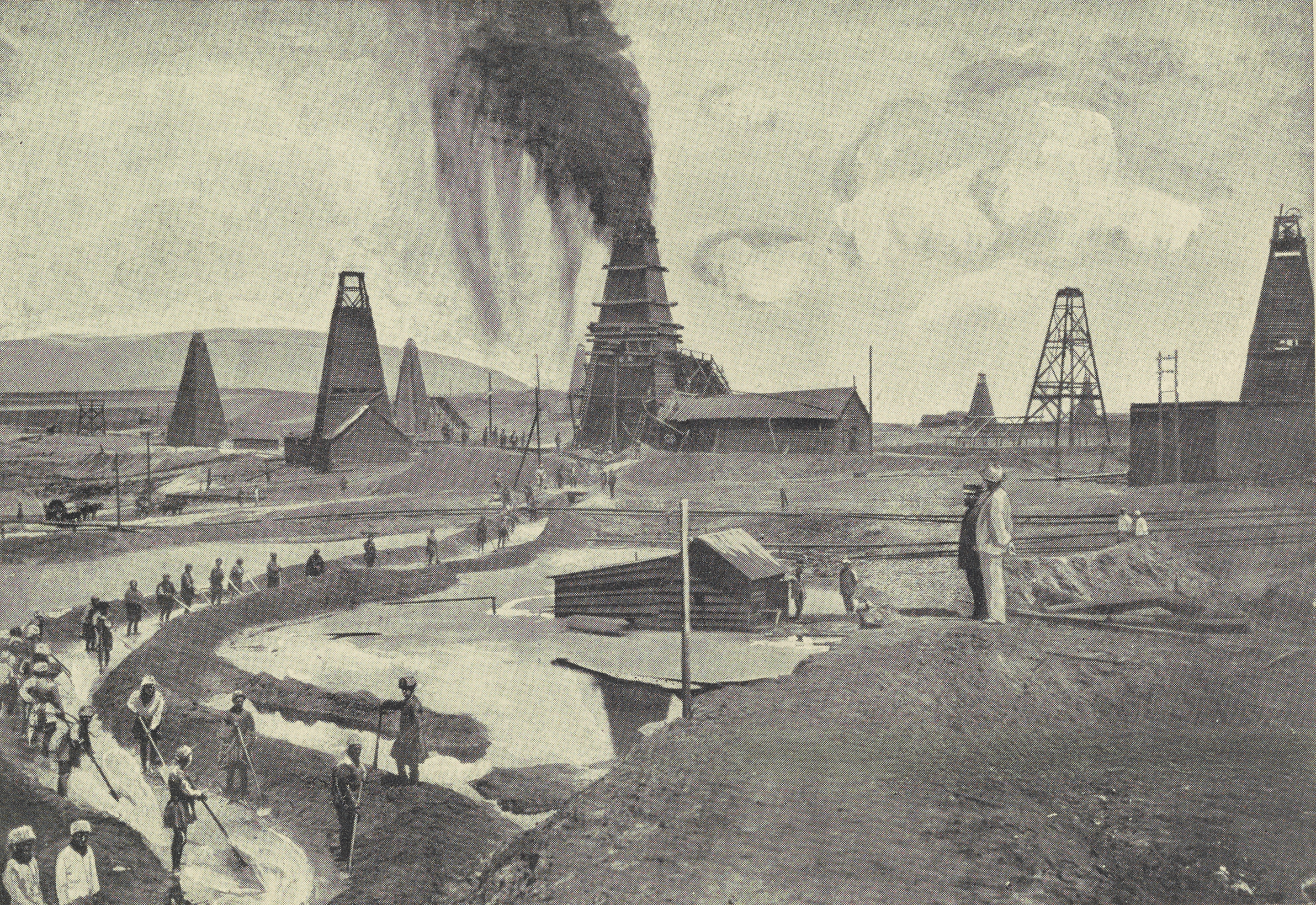
Oil was first drilled by a Russian engineer on the Apsheron Peninsula on the west side of the Caspian Sea near Baku, Azerbaijan in 1848 and initially played a fairly simple role in the Industrial Revolution as a machine lubricant. However, by the late 19th century, internal combustion engines, which relied on firing cylinders using gasoline or heavy oil (diesel) as fuel, were quickly becoming more efficient, replacing steam-power in transportation. Diesel-fired ship and train engines, for instance, carried less fuel than needed for coal-fired steam engines, while the gasoline-powered automobile quickly became commonplace by the second decade of the twentieth century.
As oil became increasingly central to powering industry and transportation, oil companies became more powerful and were able to project their economic influence to shape the politics of the countries they operated in. This became especially true in the Arabian Peninsula, which until the discovery of oil had been a sparsely-populated desert. Today, about 80% of the world’s readily-accessible oil reserves are located in the Middle East. Saudi Arabia, Russia, and the U.S. are the three largest producers.
China and Japan
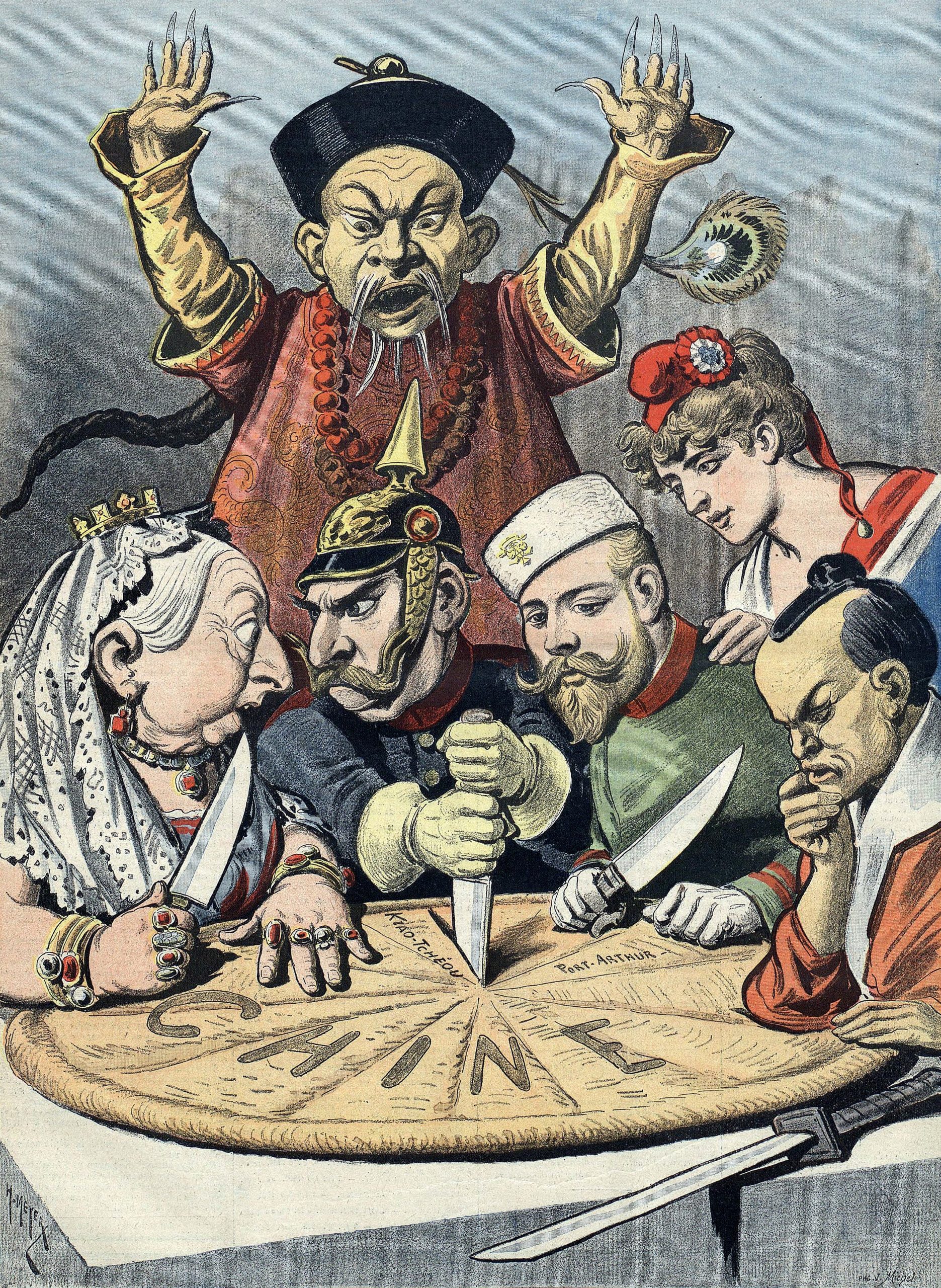
Finally, as we always do, let’s look at what was happening in the world’s biggest nation. The Chinese Empire continued its decline, as Europeans continued their presence in assigned trading ports, divvying up Chinese territory into “spheres of influence” in which commerce and Christian missionary activity was controlled by a particular European power. By the 1890s, however, China also faced the rapidly industrializing Japanese Empire. In less than thirty years, the Japanese reconstructed their government, initiated industrial activity, and built up their military through conscription and the latest weapons and ship technology. However, the Japanese home islands lacked deposits of key industrial inputs, chiefly coal, iron ore, and oil. To acquire guaranteed resources and markets, the Japanese government began to play the imperial game, following the rules established by the Europeans. Like the British in India and China, Japanese commerce laid claim to their own “sphere of influence” in Chinese territory, and claimed sovereignty over tributary states. The brief Sino-Japanese War in 1895 ended with the Qing Empire granting the Ryukyu Islands and Taiwan to Japan, and ceding trading rights in Korea and Manchuria. At the end of the 19th century, a final conflict with the West would pave the way for radical change and the end of the Qing Empire in China.
In 1900, Russia occupied Manchuria and came into conflict with Japanese interests on the Korean peninsula, leading to the Russo-Japanese War of 1904-5. After the Japanese navy sank the main battleships of Russia’s Pacific fleet in the Battle of Port Arthur and held off the Russian army, the world realized the power of an organized and industrialized Japan; forcing the Europeans and Americans to consider the Japanese Empire as an equal, while inspiring non-European colonized peoples that the Europeans were not always invincible in war.

From the Russian side, however, defeat by the Japanese on the battlefield and on the seas was not only humiliating, but highlighted the ineffectiveness of the Tsarist regime. Peace between the Russians and Japanese was negotiated in Portsmouth, Maine, in the United States, highlighting the increasing importance of U.S. interests in East Asia. President Theodore Roosevelt was awarded the 1906 Nobel Peace Prize for his role in ending the war. Japan took over Russia’s “sphere of influence” on China’s Liaotung Peninsula and was recognized as the sole power in Korea, which became part of the Japanese Empire in 1910.
The Russo-Japanese War also once again highlighted the extent to which the Qing government in China was hardly considered a factor in international relations. Even though the war concerned Chinese territory, Chinese armies were not seriously involved in the fighting; nor were Chinese negotiators present at the Treaty of Portsmouth. Empress Dowager Cixi ruled for nearly five decades until her death in 1908. Although she at times embraced gradual reform of her government and military and periodically protested European and Japanese incursions, she was realistic enough to understand her limits. More conservative forces took over in the palace in 1908, installing the five-year-old Prince Puyi as Emperor. It was not long before modernizing forces soon overthrew the decadent imperial system.
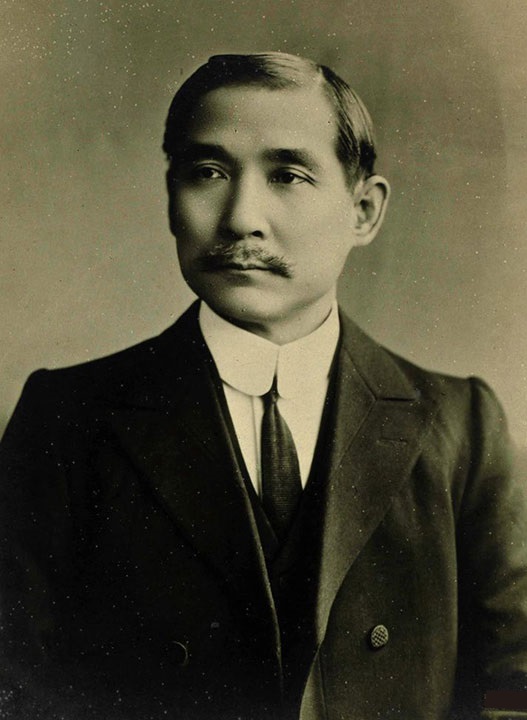
The most inspirational leader of the modernizers was Sun Yat-sen. Born in 1866, he moved to the then-independent Kingdom of Hawaii, where an older brother owned a farm, to complete is secondary education at a U.S. missionary school. Sun went on to study medicine in Hong Kong and began advocating for the end of the Qing dynasty and the establishment of a Chinese republic. Because of his opposition to the Qing, Sun lived in exile in Hawaii, Japan, and Malaysia, from where he formed the alliance which would end the Qing regime in the Xinhai Revolution in 1911.
Knowledge Check:
In chapter five we saw technology revolutionize how things were done and how it made things so easily accessible. Yet, “for every action there is an opposite and equal reaction!” The Industrial Revolution paved the way for Imperialism… Newton knew exactly what he was talking about with this law and we’ll see this in this chapter.
- The Beginning of The End
- Why would a shift from land-based to overseas empires be a significant change? How would such a change affect history?
- Declining Land-Based Empires
- Why were Englishmen like Lord Byron so supportive of Greek independence?
- What does the Charge of the Light Brigade tell us about the changing nature of warfare?
- Why is the Suez Canal so significant?
- Why was Tsar Nicholas II unwilling to consider any checks on his absolute authority?
- How did the large numbers of different ethnicities, languages, and religions in the Russian Empire create difficulties for the Tsarist government?
- What was the main factor uniting the Austro-Hungarian Empire?
- What were the factors fracturing the unity?
- Was Germany justified in its desire to become a “Great Power” like Britain and France?
- Rising Overseas Empires
- How did the British shift their imperial goals after losing much of North America in the U.S. Revolutionary War?
- Why were natives trained as an administrative class in the colonies a problem in the long run for imperialists?
- The United States: Slavery, Expansion, and Civil War
- How did technological progress impact the politics of slavery?
- How do you think the idea of Manifest Destiny held by people in the United States affected our history?
- What motivates people to argue that the Civil War was fought over something other than slavery?
- Neo-Imperialism in Latin America
- How is neo-imperialism different from the previous types?
- Why was the U.S. concerned about Chile’s naval dominance in the Pacific?
- U.S. Imperialism
- How did “fake news” contribute to history in the early 20th century?
- Can the United States approach to regions like the Philippines and Panama be considered a new expression of Manifest Destiny?
- Why did U.S. corporations feel they could do what they pleased in Latin America and the Caribbean?
- The European “Scramble for Africa”
- What caused Europeans to believe they could meet in Berlin and divide Africa between themselves?
- Did the actions of Europeans in Africa support the argument that their mission was to “civilize” the African people?
- How did technology widen the gap between imperial powers and those they conquered?
- How does the division of the world into “developed” and “less-developed” regions influence international relations today?
- China and Japan
- What were the main factors leading to China’s inability to modernize and resist European imperialism?
- What was the role of the United States in Asia in the early 20th century?
This is an adaptation from Modern World History (on Minnesota Libraries Publishing Project) by Dan Allosso and Tom Williford, and is used under a CC-BY-NC-SA 4.0 International license.
Media Attributions
- service-pnp-ppmsca-25600-25696v © Keppler, Udo J. is licensed under a Public Domain license
- 2880px-OttomanEmpireMain © Chamboz is licensed under a CC BY-SA (Attribution ShareAlike) license
- SuezCanal-EO © NASA is licensed under a Public Domain license
- Grigoriy_Myasoyedov_Reading_of_the_1861_Manifesto_1873 © Grigoriy Myasoyedov is licensed under a Public Domain license
- Russia_ethnic © Atlas Général Vidal-Lablache is licensed under a Public Domain license
- Growth_of_Habsburg_territories © Unknown is licensed under a Public Domain license
- 2880px-Austria_Hungary_ethnic.svg © Andrein is licensed under a Public Domain license
- Wernerprokla © Anton von Werner is licensed under a Public Domain license
- JaMAC © Unknown is licensed under a Public Domain license
- Canadian_Pacific_System_Railmap © Central Data Bank is licensed under a CC BY (Attribution) license
- LEAD Technologies Inc. V1.01 © J. G. Bartholomew and Sons is licensed under a Public Domain license
- File written by Adobe Photoshop? 5.0 © Unknown is licensed under a Public Domain license
- Trails_of_Tears_en © Nikater is licensed under a Public Domain license
- Gauchos_mateando © Unknown is licensed under a Public Domain license
- JoseMartiStatue-CentralParkNY © RyanFreisling is licensed under a Public Domain license
- _The_White_Man’s_Burden__Judge_1899 © Victor Gillam is licensed under a Public Domain license
- Panama_canal_cartooon_1903 © New York Times is licensed under a Public Domain license
- Screen Shot 2020-09-27 at 11.21.19 AM © Lee and Shepard is licensed under a Public Domain license
- Pablo_Neruda © Revista argentina is licensed under a Public Domain license
- MutilatedChildrenFromCongo © Alice Harris, Daniel Danielson, others is licensed under a Public Domain license
- KingShaka © James King is licensed under a Public Domain license
- Punch_Rhodes_Colossus © Edward Linley Sambourne is licensed under a Public Domain license
- GatlingGunDrawing © Unknown is licensed under a Public Domain license
- 1901_Eastern_Telegraph_cables © Eastern Telegraph Co is licensed under a Public Domain license
- lossless-page1-2880px-Oil_wells_in_Baku,_Azerbaijan_b10154140_016_tif_t435gf27m.tiff © Philip, James Charles is licensed under a Public Domain license
- Gapon_crowd_1905 © Unknown is licensed under a Public Domain license
- Sun_Yat_Sen_portrait_2 © K.T. Thompson is licensed under a Public Domain license
